The Best Whiskeys (And More!) of 2023
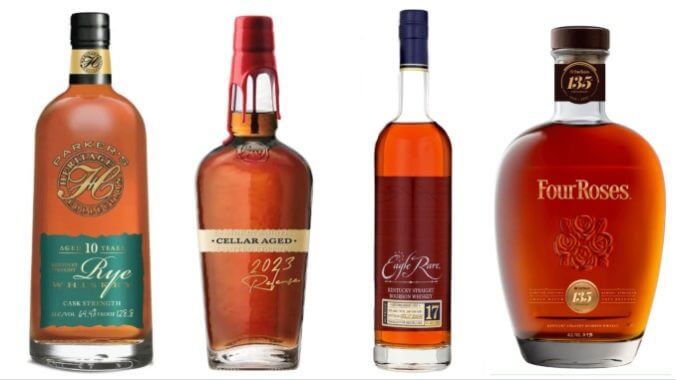
Back when I sat down to list and recognize some of the best spirits of 2019, I acknowledged at the time that it was likely the first year of my adult life where I consumed more alcohol in the form of spirits than in the form of craft beer. This was likely the result of both a disillusionment with modern craft beer styles and a slow and steady embrace of new styles of spirits for me, from malt whisky and aged rum to mezcal and amaro—and the infinite cocktail combinations that accompany them. Mixology has become my favored alcohol language, which is exactly why I created a Paste series called Cocktail Queries that has been running all through 2020-2023, answering common questions related to cocktails and spirits.
There’s no longer any doubt: Spirits have captivated the public interest, and my own. The pandemic in particular made for a setting in which it was more difficult than ever to visit the breweries, distilleries and cocktail hubs that are my typical hangouts, and I compensated by diving even further into spirits and cocktails. I explored the boundaries of emerging styles of spirits, wrote a ridiculous number of whiskey features, lists and reviews, and generally expanded my expertise in the spirit world at an exponential rate. I dove deep on issues such as out-of-control bourbon price gouging at package stores, critiqued limited release whiskey culture, documented shortages in the liquor industry, and wrote essays on macabre corners of alcohol history.
And along the way, I naturally drank some damn good spirits—having reached the end of 2023, it’s time to recognize them. Like last year, I’ve broken this down into three sections: best whiskeys, best additional spirits and bonus awards. So without further ado, let’s get into it.
![]()
The 25 Best New Whiskeys of 2023
To be considered in this section, whiskeys had to be either newly released in 2023, or hit the U.S. market in 2023.
Likewise, these picks have a tendency to trend toward limited releases and whiskeys with higher price tags, but be aware that we’ve given a few special value awards at the end of this piece. And of course, you can always consult our blind tasting of bottom shelf bourbon brands, if you’re looking for the best bang for your buck.
Please note, these are not ranked—I’ve simply listed them in alphabetical order. They include everything from bourbon and rye to new scotch whisky releases.
Angel’s Envy Cask Strength Rye Whiskey
MSRP: $270
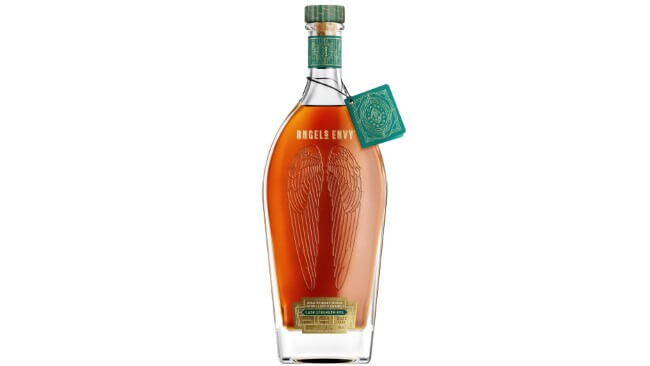
A blend of sourced rye whiskeys finished in both Sauternes casks and two styles of toasted oak barrels (American and French oak), this is the first cask strength Angel’s Envy Rye release, weighing in at 57.2% ABV (114.4 proof). And it proves to be a revelation, an extremely impressive blending masterpiece showing great dexterity from the company’s new Master Distiller Owen Martin, deftly balancing competing elements into a wonderfully spicy, decadent rye whiskey experience. As we wrote when tasting it:
On the nose, this one is deep and complex–I’m getting far away rye bread and hints of caraway, along with pepper and a toasted cocoa/graham cracker note, along with both toasted oak spice and baking spice. I also think I’m getting traces of white grape here, but the nose is subtle and intriguing. After sitting in the glass for quite a while, maple is also coming through in a big way. On the palate, this is sweet and very spicy, with massive rye flavors. I am immediately taken aback: Even with the dual cask finish, it has been a while since I got such a pure flavor of the rye grain as you do here, which is a testament to the quality of the sourced spirit. There is tons of pepper, caraway and citrus, complemented by stone fruit and sweet herbal and floral characteristics. At the same time, you also get the toasted oak in an expressive way, along with significant vanilla/cream soda sweetness. Notably, it drinks shockingly easily for this proof point–truly an iron fist in a velvet glove here.
Bardstown Bourbon Co. Origin Series Rye Whiskey
MSRP: $70
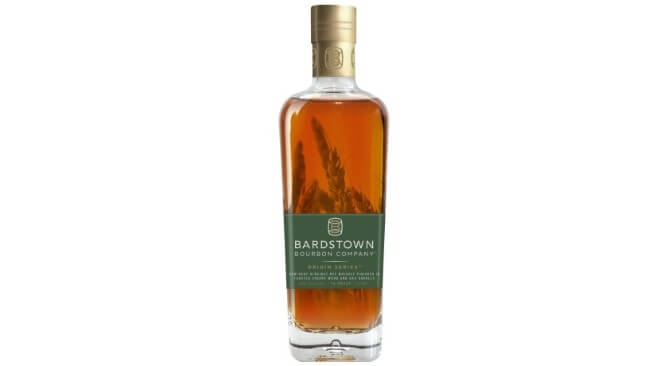
The rye whiskey entry of Bardstown Bourbon Co.’s Origin Series is definitely the most unique of the three bottles, and the one most indicative of BBC’s work in product innovation. The whiskey itself is from a classic recipe, their own version of the 95% rye and 5% malted barley standard famously associated with MGP of Indiana, but it’s the secondary barrel finish that really sets this one apart. Working in conjunction with the cooperage of West Virginia Great Barrel Co., BBC has developed a new style of barrel composed of alternating staves of standard American white oak and cherry oak, with two different toast profiles delivered by WVGB’s state of the art infrared toasting technology. Thus, in the finished barrels, each stave alternates between lightly and medium toasted American oak and cherry wood, imparting a radically different flavor profile. As we wrote when tasting it:
On the nose, this one is beguilingly rich and different from what you’d likely be expecting from a mid-aged rye whiskey with the 95/5 mashbill. It’s rich, toasty and spicy all at once, with notes of fennel seed, dill and rye spice sharing space with deeply caramelized sugars, brown sugar, char, aromatic toasted oak and warm spices. On the palate, the cherry wood contributes wood spice notes that recall French oak, with lots of cinnamon sugar and cardamom, but there’s also savory herbal notes, dill and a slightly hops-like bitterness. Big, rich caramels, molasses cookie and sweet oak are other highlights of this decidedly unique rye, which more than anything else I’ve tasted in this price range replicates some of the flavors you expect to get in abhorrently expensive, extra-aged rye. I don’t know if there’s anything else on the market today that tastes quite like the Origin Series Rye Whiskey, and I mean that in the best way possible. BBC has tapped into a signature production technique here that has given them a product that truly stands out.
Barrell Rye Batch 004
MSRP: $90
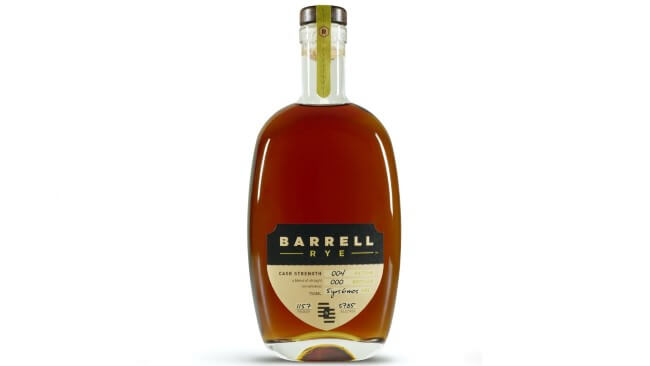
It has been quite a while since the last time we got a proper, numbered blend/batch of rye whiskey from Barrell, and the delivery did not disappoint. This one is a fusion of younger and older ryes from Indiana, Tennessee, Kentucky and well-aged juice from Canada. It carries a “5 years, 6 months” age statement on the label, but this misses the inclusion of significantly older components such as 10-year-old MGP rye and 14-year-old Canadian rye. The derived mash bill lands at 89% rye, 7% corn and 4% malted barley, so there’s definitely a significant amount of 95/5 and 100% rye present in the blend here. This is certainly one of the most unique rye whiskeys we tasted in 2023, as we wrote at the time:
On the nose, this stuff initially took me aback with some of its genuinely unique notes–it seemed to take me a minute or two before my brain began processing them in a cogent way. What we have here is initially sharp and angular, full of intense herbal and punchy rye character that transcends categorization. There’s definitely mint involved, but from there it diverges in really interesting directions. I’m getting more resinous qualities combined with fruitiness, reminding me of something like juniper berry, along with white grape. Over time, you can also pick up more elements that ground you in more familiar territory, with traces of caramel and charred oak, but the stars here are complex herbal character and rye grain. On the palate, that impression holds true with big rye spice, caraway and mint, though it’s sweeter than I was expecting from the nose–this is a sweet herbaceousness, ‘ala alpine amaro without the bite, combining with caramel and honey tea/bergamot, into tobacco and charred oak. A kiss of espresso forms a welcome darker side to the sweetly herbal and grassy flavors. There’s some heat, but it’s fairly gentle considering the proof. Progressive sips send me down little avenues of floral and perfumey impressions, and then back toward fruit with notes like pear and even olive. Charred oak and espresso ties it all together. This is unusual, but captivating, and I’m liking it more and more with each sip.
Blood Oath Bourbon Pact #9
MSRP: $99
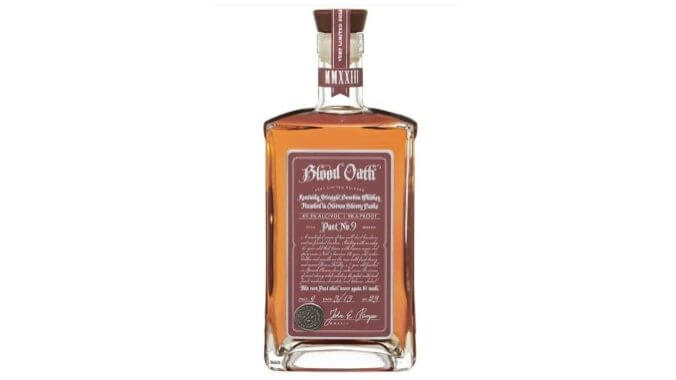
The Blood Oath series sometimes gets dinged with claims of inconsistency, but that’s really the whole point–it’s a limited edition series of finished bourbon blends that will never be repeated, and as such they range in wildly different directions. This year’s Blood Oath Pact #9, however, definitely represents a sweet spot for the series. The blend on this one includes some particularly old stock–16, 12 and 7-year-old rye bourbons, which are finished in Oloroso sherry casks from southwest Spain. And the secondary maturation here treats those bourbons quite well, as we wrote when tasting it:
On the nose, the first thing standing out for me is fragrant cinnamon and warmly toasted, spicy oak–there’s a lot of baking spice to be found, but also a distinct nuttiness, which combines with creamy caramel to suggest pecan praline. I’m also getting some of the dried fruit you’d expect to encounter with the fortified wine casks that are in play, along with a distinctive butteriness. The sherry character is mostly coming through in the fruitiness, rather than the more intense oxidized nuttiness one will see in truly powerful, “sherry bomb” scotch whiskies. Regardless, the overall nose is very pleasant. On the palate, this one favors flavors that are sweet, rich and spicy–big, bold brown sugar and roasted nuts, with hints of darker, vinous fruit coat the palate on first inspection, leading to a plethora of baking spice notes. Old, sweet oak makes an appearance, equally weighted with spiced pralines and dried fruit. Again, there are notes here that are certainly appropriate for sherry, but I don’t necessarily get the sense that Blood Oath Pact 9 is being defined by sherry flavors specifically–it’s more a showcase for the extra-mature bourbon character, with sherry flourishes that I think work quite well. It’s flavorful but gentle in its approach, with very little heat or ethanol presence, and it functions beautifully as a lower-proof neat sipper.
Booker’s Bourbon “Charlie’s Batch”
MSRP: $90
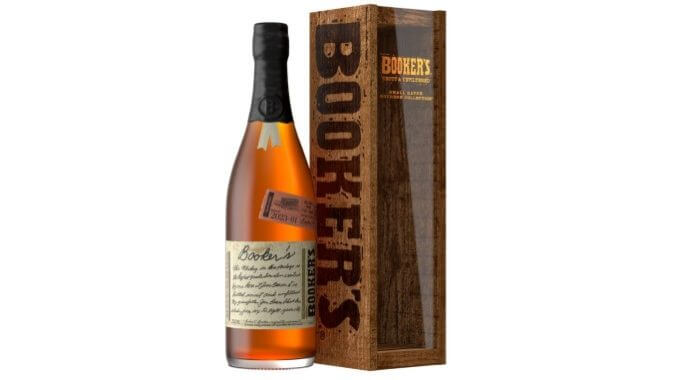
It seems like in any given year, there’s always one particular Booker’s standout, though bourbon geeks don’t always agree on which one that might be. For our money, that’s Charlie’s Batch in 2023–like other recent Booker’s batches, it can boast an age statement of more than 7 years, and weighs in at a cask strength of 63.3% ABV (126.6 proof). It’s an intensely flavorful batch that is nevertheless very easy to enjoy neat, as we wrote at the time:
On the nose, Charlie’s Batch immediately stands out for just how “dark” it reads, with huge waves of deeply caramelized sugars, charred oak and roasted nuts. Rather than the more classical Beam peanut note, I’m getting more of a roasted, glazed, buttery pecan type of impression, with lots of brown sugar, almond extract and some herbal rye as well. There’s a slightly funky, older oak aspect to the wood profile, while the ethanol stands out for just how gentle and muted it is for this proof point. It makes for a very easy glass to nose deeply. On the palate, Charlie’s Batch features that same deep, dark caramel, along with both vanilla and chocolate ribboned together, chased by savory herbal notes of rye, but also tobacco and a little leather. This feels weirdly mature for Booker’s, capturing some of the type of character one more typically expects to find in say, Knob Creek 12 Year, albeit at an advanced proof point. I’m also getting some black cherry and jammy fruitiness, and a cinnamon brown sugar explosion, supported by modest oak tannin keeping things from getting too sweet. The ethanol is notably mild here as well, disappearing into the flavor profile and making this one drink far lighter than its actual strength, despite the huge, assertive flavors.
Buffalo Trace Antique Collection Eagle Rare 17 Year Bourbon
MSRP: $125
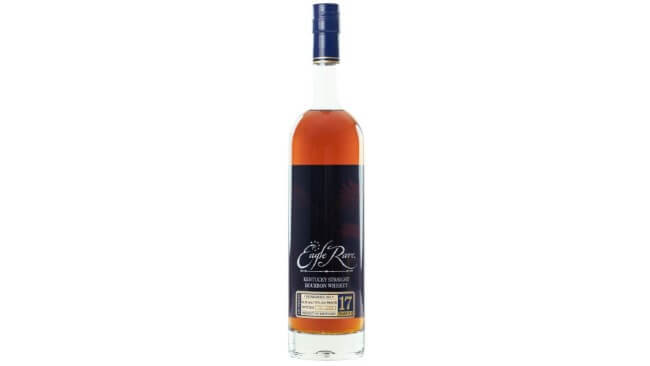
The Buffalo Trace Antique Collection is always going to contain one or two exemplary standouts in any given year, though in recent years the ones generating the most copy almost always have a tendency to be either George T. Stagg or William Larue Weller, thanks to their cask strength nature. This year, however, the really impressive sleeper of the group is actually Eagle Rare 17-Year-Old Bourbon, which in reality carries an age statement of more than 19 years–that would make it the oldest release of the Eagle Rare spirits since its 23-year-old expression was included in the Antique Collection. This is just a wonderfully harmonious and balanced, complex spirit, as we wrote when first tasting it:
On the nose, this year’s Eagle Rare 17-Year-Old Bourbon batch features a lovely, oaky complexity to it–I’m getting notable clove and seasoned oak/woodpile, along with nutty cocoa, charred wood and buzzy cola spice/sweet spice. On the palate, it revels in the spicy oak–there are heaps of brown sugar present, with cherry cola and vanilla frosting, glazed nuts, into hints of tobacco and leather. The tobacco quality is far more subtle and delicate than in the likes of the Sazerac 18, which becomes a theme with this release: It is easily the most subtle and nuanced of the 2023 Antique Collection whiskeys. The balance is impeccable, swinging between dark chocolate and brown sugar, copious baking spices/cola, coffee and cigar wrapper, with delicate oak tannin providing a subtly dry finish. This is extremely delicious, and an impressive feat of aging and blending. It’s obviously not as bold as the likes of the George T. Stagg, but this one is a joy to dissect and consider all its flavors.
Buffalo Trace Prohibition Collection Old Stagg
MSRP: Not sold separately
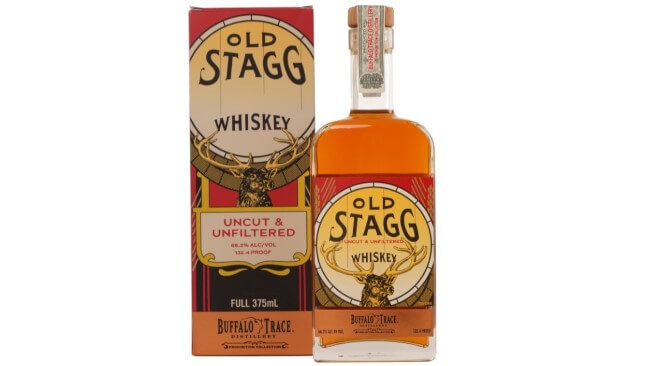
Considering the $1,000 price tag and extremely limited nature of this year’s Buffalo Trace Prohibition Collection of limited edition whiskeys, this release may have come and gone without many whiskey geeks having a chance to sample many of its small, 375 ml bottles. There are a few very interesting spirits in there, though–none more so than Old Stagg, a heavy hitting cask strength expression that weighs in at 66.2% ABV (132.4 proof). As the company describes it: “Old Stagg would become the flagship whiskey brand for the George T. Stagg Distillery at the tail end of Prohibition, taking the place of O.F.C. bourbon. Made to honor George T. Stagg, who owned and operated the distillery in the late 1800s, the brand would be used in several ads and sales materials in the years after Prohibition. Today, the brand lives on as Stagg and George T. Stagg, both barrel proof whiskeys that have their roots in this Prohibition era brand.”
The resulting liquid is a punchy, but surprisingly inviting dram, as we wrote when tasting it:
On the nose, Old Stagg revels in bold caramel and sweet oak, with caramelized brown sugar, tobacco, leather and yes, some stinging ethanol that steadily dissipates over time. On the palate, this is full of flavor but actually quite easy drinking for the advanced proof, with loads of brown sugar, vanilla frosting, cherry compote, baking spice, peppery rye, leather and sweet oak. Its lingering, roasty finish moves in the direction of mocha and modest oak tannin, with a bold, charred roastiness becoming especially present on the finish. I must say, it’s a very satisfying dram, particularly for how well integrated the ethanol is in the flavor profile. It’s been a while since I’ve had a 130+ proof whiskey that was quite this friendly.
Dalmore Select Edition 2005
MSRP: $500
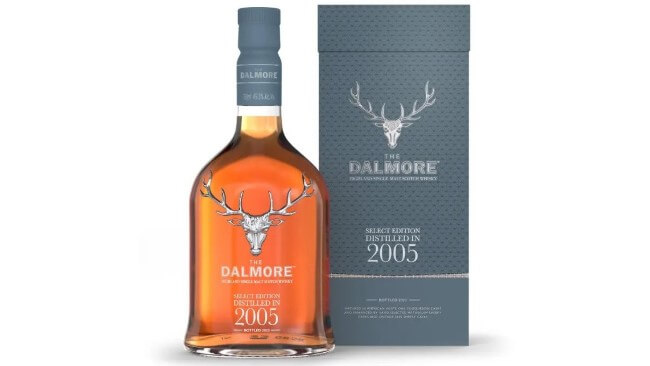
The Dalmore’s Vintage Collection is more or less what it sounds like–every November, some of the company’s most exceptional casks are chosen and blended to represent specific vintage years. This year’s standout, meanwhile, is the 18-year-old expression from 2005, which the company says “proudly showcases the iconic chocolate and orange flavor profile that The Dalmore is renowned for. We found this one to particularly benefit from time in the glass and exposure to the air, as we wrote when sampling it:
When I first began nosing the impressively stout (98.6 proof!) cask strength expression of Dalmore Select Edition 2005, it actually seemed curiously indistinct or shy to me. More time began to reveal that this is an expression that really benefits greatly from some time in the glass, being almost mandatory to wake up this spirit. The nose starts with toasted malt and shortbread, citrus zest and leather, with cinnamon and maybe the tiniest whiff of smoke. More time exposed to the air wakes up more of the sherry cask influence, with rum raisin, roasted nuts and vinous fruit joining an increasingly complex medley.
On the palate, this is nutty, earthy and sweet up front–it’s actually a little bit funky and almost meaty, though that impression is quickly overtaken by waves of stewed dark fruit, dried fruit, vanilla cake, citrus and finally mocha. Over time, the trademark Dalmore orange is really coming to the fore, putting up big Creamsicle notes alongside the vanilla. At the same time, this also possesses a complex leathery and earthy backbone, making for a soulful malt to dissect. The whole time this was in the glass, it seemed to be getting better–and I must say, the 98.6 proof is extremely well integrated. Tasting this whisky blind, I never would have expected it to be that high, though it helps to account for the complexity of its flavors.
Elijah Craig Barrel Proof C923
MSRP: $70
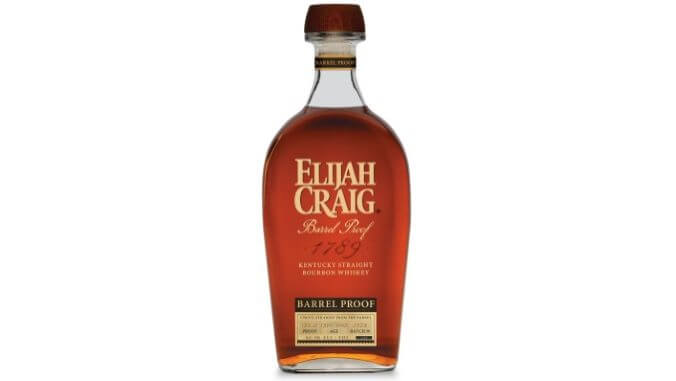
This was a very consequential year for Heaven Hill’s Elijah Craig Barrel Proof, which had served as a veritable model of consistency through the era of bourbon mania in the U.S. More uncertainty was introduced by the brand’s announcement that it was dropping the fixed, 12-year age statement of ECBP in favor of a moving one from batch to batch, meaning that some batches will be younger than 12 years, and some will be older. This one, meanwhile, is much older at 13 years, 7 months, while also being the strongest expression of ECBP–and the only one over the 130 proof mark–since the end of 2020. It begs the question of how often fans can expect to possibly see this kind of batch from Heaven Hill. Will this be a once-a-year treat? Or something encountered even less frequently?
Those questions really wouldn’t matter so much, except for the fact that ECBP C923 proved itself to be one of the best batches that the series has ever had. On one hand, that’s a great thing for Heaven Hill, except for the fact that it implies older ECBP releases will likely always be considered of higher quality than younger ones. Regardless, it will be fascinating to see how the distillery approaches this beloved brand in 2024. But C923 is one of their masterpieces, as we wrote when tasting:
On the nose, it’s immediately clear that ECBP C923 is going to be a stand-out batch at the very least. This is aromatically one of the richest batches of Heaven Hill bourbon I’ve come across in quite a while–sweet old oak and burnt caramel/creme brulee is jumping out of the glass, with copious amounts of chocolate, pecan praline and flashes of brighter citrus. There is a whole lot going on here. Red fruit is represented, with a character that waffles between brighter berry and more vinous, cooked fruit, supported by slightly musty but never overpowering oak, traces of baking spice and savory rye. The ethanol, meanwhile, is very muted on the nose for the 133 proof–this reads as less boozy on the nose than some of the ECBP batches in recent years that were in the low 120s.
On the palate, this is an absolute masterpiece of everything one is typically hoping to find in a Heaven Hill bourbon. There is huge, very dark caramel–perhaps closer to molasses–with explosions of baking spice and bright raspberry. Brown sugar, pepper, glazed pecans, stem ginger and cinnamon sugar linger on the palate forever, with delicately drying tannic oak keeping it from ever reading one-dimensional in its sweetness … though this is definitely sweet and decadent. The warmth, meanwhile, creeps from the palate to the chest in a never-ending Kentucky hug, but this is simultaneously among the easiest-drinking 133 proof bourbon batches you will ever encounter. Everything is harmonious. It’s shocking how easy this is to drink, but how much there is to mull over in drinking it. With that said, I think there may actually be some drinkers out there who want the 133 proof to speak a little bit more boldly, but for me it’s in a perfect place.
15 Stars Fine Aged Bourbon Platinum
MSRP: $280

There’s been a veritable flood in recent years of well-heeled companies entering the American whiskey market with no goal beyond procuring and blending sourced spirit, but few of them have caught my interest with their early output quite like 15 Stars. These guys have been putting out uniformly high-quality releases of blended bourbon from the “big three” states for bourbon production: Kentucky, Indiana and Tennessee. This one takes bourbon expressions carrying 10, 15 and 18-year-old age statements from those three regions, putting them together with a finished product being bottled at 49% ABV (98 proof). The results is a lovely, well-rounded sipper that gets the most out of its age statement, as we wrote when tasting it:
On the nose, 15 Stars Platinum leads off with caramel corn and delicate toasted oak, slightly dusty, combined with woody spice, caramel candies and modest vanilla frosting. Over time, the nose becomes somewhat fruitier, with brambly blackberry joining the party, along with more of a roasted nuttiness evoking peanut brittle. It’s a pretty well-rounded nose, all in all, though it doesn’t explode out of the glass. On the palate, this one initially turns in big spice–tons of baking spice in particular, with a lot of cinnamon brown sugar and cardamom. This is mostly oak-derived spice, supported by caramel candies and vanilla bean. I’m getting apple fruitiness, eventually reminiscent of fried apples and cinnamon. This then transitions to more mature elements of tobacco and leather. Sweetness is mild to moderate, counteracted by just enough drying oak tannin. The whole profile works together quite harmoniously, and the ethanol is extremely mild–the one thing you might say you want is just a bit more boldness or strength to the overall package. Another 10 proof points might make this a world beater, it’s hard to say.
Four Roses 135th Anniversary Limited Edition Small Batch Bourbon
Price: $200
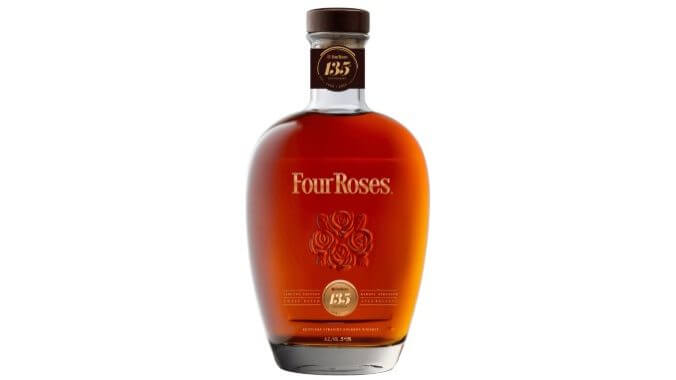
In a landscape where there are more $200 price tags on limited edition bourbon releases than ever, it’s good to have one come along now and then that illustrates the kind of undeniably special experience you’re supposed to be receiving when you shell out that kind of cash. Four Roses’ annual LE Small Batch is frequently among my favorite releases of the year, but 2023’s expression for the brand’s 135th anniversary is truly on another level, having much in common with the 2019 LE Small Batch that was also one of my previous favorite expressions. Combining the OESK, OESV and OBSV recipes of Four Roses, it weighs in at 54% ABV (108 proof), which is slightly lower than other recent expressions, but no less dynamic. As we wrote when tasting it:
On the nose, this one has a whole lot to offer, although notably it seems to leap out of the glass more and more the longer it’s sitting with some exposure to the air. There’s tons of sweet caramel and commanding old oak/sweet oak presence up front, along with nutty chocolate and savory, herbal rye. I’m also getting clove and some vinous fruit notes that are a bit hard to place, before it doubles down on sweeter impressions of toasted malt and snickerdoodle or cinnamon sugar donut. Mouth watering. On the palate, caramelized sugars and oak again lead the way–this is getting some mileage out of that small portion of 25-year-old OBSV. I’m getting honey and dulce de leche, along with musty oak, grassy and peppery rye notes and some jammier fruit with hints of raspberry. Baking spice notes favor cinnamon and cardamom, slightly pastry-like, with oak split between roasty, sweet oak and a spicier wood dimension. Alcohol heat is perfectly integrated for the proof point, making for a very easy drinking experience that is by no means lacking in complexity. Oak is a real star attraction here, with depth of flavors that showcase multiple dimensions of the barrel, without ever having any unpleasantly dry, overpowering quality.
Hemingway Rye Whiskey
MSRP: $109
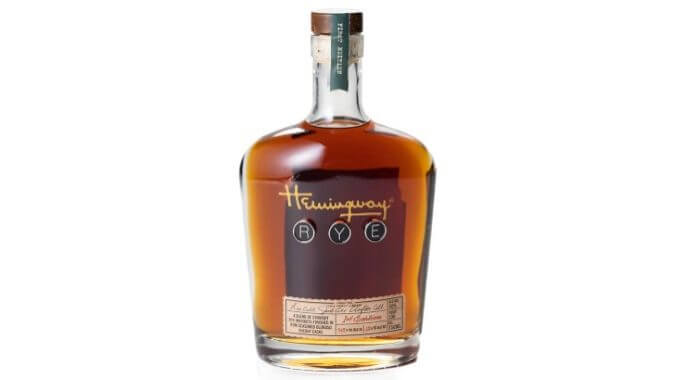
With so many non-distiller producers vying for shelf space in 2023, it’s little wonder that there are simultaneously so many finished whiskeys proliferating in this higher MSRP, limited release space–it’s a way for an NDP to make their blend more distinct than the sourced liquid would otherwise appear to be, while justifying a higher price tag. This has resulted in some less than exciting bottles being sold for very high price tags, but there still are occasional releases of this sort that really work harmoniously. So it is for Hemingway Rye Whiskey from Old Man and the Sea Brands, who also own Papa’s Pilar Rum. The brand was created as a collaboration between Angel’s Envy (itself a finished bourbon) co-founder Steve Groth and the Call family of distillers–Ron Call, Clayton Call, and former Green River Distilling Co. Master Distiller Jacob Call. They’ve assembled a blended rye whiskey, which is then given a second maturation in what are described as “rum-seasoned oloroso sherry casks,” which sounds like a roundabout way of saying that they’re likely casks that previously held Papa’s Pilar expressions. Hemmingway Rye Whiskey is primarily composed (94%) of well-aged, 9-year-old Indiana straight rye whiskey, presumably from MGP, and 6% 4-year-old Kentucky straight right distilled by Jacob Call, possibly at his new Western Kentucky Distilling Co. in Beaver Dam, Kentucky. They’re then finished in those “rum-seasoned” sherry casks, and bottled at a respectable 50% ABV (100 proof). The result is richly spiced and enticing, as we wrote when sampling it:
On the nose, this is rich and impactful–heavy brown sugar and molasses give impressions of sticky sweetness, alongside threads of herbal rye, roasted chocolate nuttiness and baking spice. Toasted sugar and allspice-tinged Christmas cookies give way to dark, dried fruit, suggesting raisin or prune. The influence of the finishing cask is clear, as no one would be mistaking this for the typical Indiana rye, but more than enough of its signature characteristics remain. On the palate, Hemingway Rye luxuriates with loads of caramelized sugars, balanced at least a bit with mild, peppery spice. Baking spice is a big player, with cinnamon and allspice melding with toasted oak. The sweetness, I’m pleased to find is never more than moderate in terms of assertiveness, as I feared it might be genuinely saccharine from the nose. What we have instead is a rye infused with deep, dark fruitiness, more of that dried fruit character, melded with spice that shows off both the herbal/peppery side of the rye and the more decadent baking spices likely imparted by the secondary maturation. The rum crossover is bold, but not cloying or clumsy–it’s right where it probably should be. The final result feels genuinely luxurious–maybe a little on the sweet side, but that doesn’t mean I don’t want to get it into an especially decadent Manhattan as soon as possible. Quite the opposite, in fact.
Jack Daniel’s 12 Year Old Tennessee Whiskey
MSRP: $80

The last few years have really served to transform whiskey geek perception of Jack Daniel’s as a brand, turning the world’s #1 selling brand into a veritable powerhouse of sought-after releases, both in terms of high-proof single barrels and expressions that increasingly have featured advanced age statements. There has perhaps been a bit too much focus on the so-called “hazmat” releases, like the skyscraping Coy Hill, but the age-stated Jack expressions, on the other hand, have absolutely deserved the attention they’ve been receiving. This year’s 12 Year batch was effectively a sequel to the previous 10 Year, with the unexpected bonus of a significant bump in strength, from 48.5% ABV (97 proof) to a robust 53.5% ABV (107 proof). That bump really helps put this release in a new, rarified air for the Jack Daniel’s brand, being arguably my favorite thing with a Jack label I’ve encountered to date. As we wrote when first tasting it:
On the nose, Jack Daniel’s 12 Year Old is very sweet, fruity and expressive. In terms of color in the glass alone, one can clearly see the effects of extended aging in the Tennessee heat here, resulting in a burnished brass hue that is particularly attractive. Caramelized sugars leap out of the glass, with butterscotch and toffee intertwined with fruit–signature JD baked banana notes, and dried fruit, coupled with deep oak, dark chocolate and cinnamon cookie butter/speculoos. On the palate, this is again just overflowing with caramelized sugars. The overall effect is sweet and spicy, with tons of sweet cinnamon brown sugar and dashes of cardamom, combined with toasted oak spice and lots of flambeed banana and plantain. It has a slightly tropical vibe, perhaps suggesting rum raisin, while the big oak presence brings modest tannins. Overall, it leans toward the sweet side, with medium to high residual sweetness–perhaps more than you’d expect for a pretty decent age statement. It gives you the sense that these particular barrels could probably keep on aging for quite a while before the oak became dominant, which is all well and good, as the company is seemingly planning to continue releasing older expressions if the results are good. Ethanol heat, meanwhile, is pretty much right where it should be for the proof point, being just hot enough to let you know it’s there.
Jim Beam Hardin’s Creek Batches
MSRP: $170
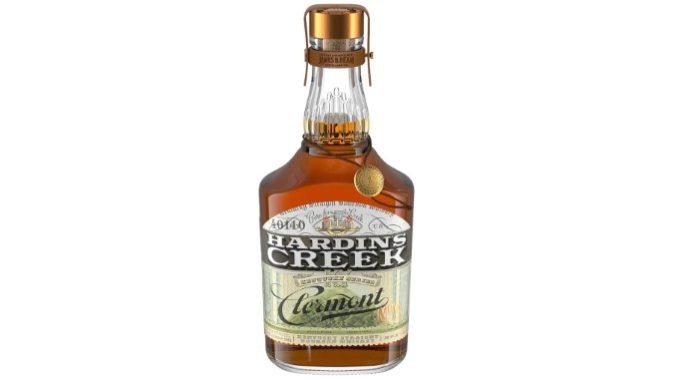
I want to make a special exception here to recognize the quality of not just one of the 2023 Hardin’s Creek bourbon batches from Jim Beam, but the entire lineup of all three of them–Clermont, Frankfort and Boston, which all weighed in at 55% ABV (110 proof) and carried 17 year age statements. The names come from the different locations/rickhouses where each batch was drawn from, with the overall Kentucky Series of Hardin’s Creek highlighting how the same liquid can mature in different ways within the micro-climate of varying rickhouses. That’s a great concept, but what really stands out at the end of the day is how excellent each entry in Hardin’s Creek has been to date, regardless of where it spent its maturation. These feature every aspect and flavor profile that I personally love in well-aged Beam bourbons, and I’d be thrilled to encounter any of them again. If I had to choose one? Perhaps the Clermont batch, which we wrote the following about when first tasting it:
On the nose, this is heady and bewitching stuff–loads of molasses and extra dark caramel, verging on burnt, combine with huge vanilla aromatics and waves of burnt, slightly musty, funky oak. There’s a mild roasted nuttiness that is suggestive of Beam, but that dimension of the classic Beam bourbon profile has been largely smoothed away over time. What you get instead is a lot of concentrated dark fruitiness, a brambly blackberry jam-type note that combines with the vanilla to suggest berry pie. The ethanol stings just a tad here on the nose, but over time the aromas are getting more and more decadent, molasses cookie seguing into leather and cigar box.
On the palate, Hardin’s Creek Clermont is initially full of contrasting notes of sweet caramel and savory herbs/tobacco/rye spice, before berries and vanilla move in to luxuriate on the palate. It again evokes berry pies, with moderate residual sweetness, though the profile quickly moves in the direction of old, seasoned oak, with intense char and French roast coffee jumping into the driver’s seat. On repeat sips, I’m getting singed cinnamon sticks and pithy berry jam, with oak that is both sweet and burnt. The alcohol presence is much more subdued to me here on the palate compared to the nose, receding far into the background, while the supple tannin provided by all that oak never detracts with a distracting level of astringency. This is absolutely not “overoaked” in any sense in my opinion–it has oaky complexity on display that will make this bourbon a must-find for a certain species of bourbon geek.
Maker’s Mark Cellar Aged Bourbon
MSRP: $150
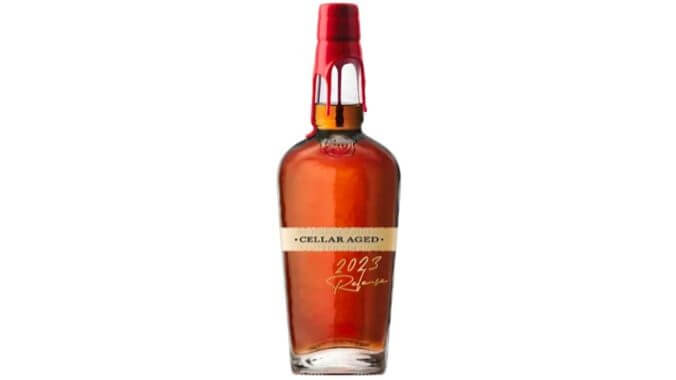
One of the year’s buzziest releases, and also one of its best, Maker’s Mark Cellar Aged Bourbon is a rare venture into concrete age statements for the wheated bourbon brand, which distillers feel is in danger of being overtaken by oak when aging for extended periods in the conventional, temperature-fluctuating rickhouses. That potential pitfall is solved via the so-called cellar aging, which takes the spirit down for the second half of its maturation into the company’s limestone cellars, which provide a very stable, cool environment for a more gentle period of maturation. This second period of aging is intended to slow the interaction between the spirit and charred oak barrel, lessening the acquisition of elements such as wood tannin that might otherwise become too pronounced. The final blend comes down to 13% 11-year-old bourbon and 87% 12-year-old Maker’s Mark bourbon, bottled at a cask strength of 57.85% ABV (115.7 proof). This is intended to be the launch of an annual limited edition release, with an MSRP of $150 in the U.S., although good luck finding this at list price. It is every bit as good as we hoped, though, as we wrote when tasting:
On the nose, the Cellar Aged leads off with very rich impressions of molasses, cherry compote and dark chocolate, evoking cherry cordials in particular. There’s some brighter raspberry mixed in, along with plum and cassia bark. The cocoa is quite pronounced, and very beguiling. As it sits in the glass and I return to it, I’m increasingly getting a lovely and subtle toasted graininess here as well, with whiffs of leather and dried fruit, along with musty old oak. There actually is a fairly substantial ethanol presence on the nose as well, which makes it read slightly hot compared to what I was expecting.
On the palate, we are buffeted here by wonderful old oak and molasses flavors, along with stewed dark red fruit. There’s a ribbon of vanilla buttercream sweetness/richness, paired with more chocolate. I’m getting snickerdoodles or churro, drizzled in chocolate, into antique oak that is fairly assertive but wonderfully composed. What really stands out about it, though, is the character of that oak and the way its tannic contribution gently guides the sip from start to finish. I have seen other reviews of Cellar Aged essentially implying that the secondary aging period has served to render this bourbon as simply sweet and decadent, free from any oak tannin or drying effect. I find that to be quite incorrect–there is significant tannin here, but it has a delicacy rarely seen in the bourbon world, which is what makes it special. Each sip is carried from a very sweet front end to a delicately dry conclusion, with a sensation I would compare to the delicate floral bitterness of a great German pilsner in the beer world. This is absolutely key to the character of Maker’s Mark Cellar Aged, taking it from being simply decadent to a very elegant bourbon dram. It’s the cohesion and balance that makes this one special.
Old Elk Cigar Cut Island Blend Whiskey
MSRP: $130
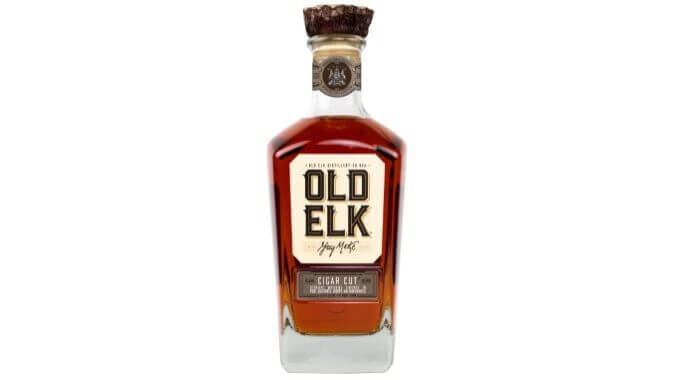
Old Elk’s Cigar Cut series brings together some of its older and richer cask-finished whiskeys, but the “Island Blend” takes things in a more specific direction by focusing on finished whiskeys that are “tropic affiliated.” This means finishes such as port, sauternes, sherry and rum casks, layered on a variety of different spirits, including the company’s high-malt bourbon, straight rye and straight wheat whiskey mash bills, all aged for a minimum of six years before a secondary maturation in each disparate style of finishing barrel. The final product–this is the second iteration of Cigar Cut–is then blended and released at 55.85% ABV (111.7 proof). All told, that’s a dizzying collection of different finishes and spirits involved, which makes for a risky premise–there’s always a likelihood that the end product feels muddled and incoherent. Happily, though, this blend instead captures a satisfyingly exotic character that helps it to stand out, as we wrote when tasting:
On the nose, I’m getting caramel candied and honeycomb up front, with shortbread-like biscuit, vanilla and significant fruitiness that reads as both pear and more exotic tropical fruit. I can’t quite put my finger on this, as it evokes melon or starfruit, something in that vein, brightened up by citrus. It’s a nose that is partially familiar, but notably exotic. Of the elements involved in the blend, I would say it perhaps reflects the bright sweetness of the sauternes barrels. On the palate, this is notably viscous, with a quite thick, luxuriously smooth and satiny mouthfeel. It turns here in the direction of spice to a greater degree, but also offers up from nice herbal and sweet flavors. I’m getting honey, eucalyptus, rye spice, tobacco, vanilla and a return to the pear and melon/cantaloupe fruitiness, with flashes of more toasted grain or bread. Moderate to high residual sweetness give it a somewhat desserty vibe.
Old Fitzgerald Spring 2023 (10 Year) Bourbon
MSRP: $140
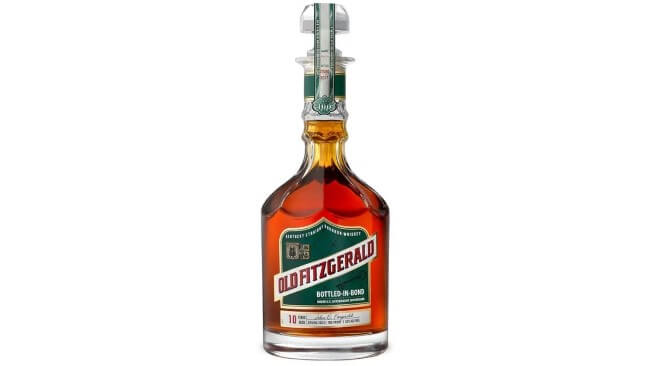
Over time, the most impressive thing about Heaven Hill’s ongoing Old Fitzgerald series of wheated bourbons has often been the fact that the younger entries in the series have been some of its best–this was true of the 8-year-old batch released in spring of 2021, and it’s also true of this 10-year batch from spring of 2023. Unfortunately, this release also highlighted the price creep of the series at least somewhat, as the previous peg of roughly $10 per year of age statement has gradually given way to inflation and the upward climb of bourbon prices in general. Regardless, this batch hits the classic Heaven Hill wheated bourbon mash bill notes right in the center of the bullseye, as we wrote when tasting it for the first time:
On the nose, Spring 2023 opens with a deep nuttiness, a combination of roasted almond butter and lots of sweet oak, more than one would perhaps expect from this being one of the younger entries in the series. I’m getting sweet toffee as well, along with jammy dark fruit evoking berries (boysenberry syrup) and stone fruit like plum. It’s quite a nice nose, hitting multiple elements I tend to like in Old Fitz releases, and I expect that someone trying this without context would probably think it was one of the older expressions in the series rather than one of the younger ones–although in reality, 10 years is still plenty mature for any bourbon. On the palate, this bottle is giving off tons of sweet oak, along with huge caramel, brown sugar cinnamon, slightly hot ginger and a kiss of woody tartness that for me doesn’t detract from the experience. It follows up with moderately intense roast and mocha tones, fairly sweet, with flourishes of cherry and plum fruit. I’m very much enjoying the interplay between oak, caramelized sugars, spice and fruit here, making for a profile that seems like it has a little something for everyone. The overall effect is delicious, in my opinion.
Old Forester 117 Series: Bottled in Bond Bourbon
MSRP: $60

It’s a little bit ironic, perhaps, that this was my favorite entry in Old Forester’s 117 Series to date, given that the point of the experimental series is really to serve as a microcosm of all the different ways bourbon is produced in the company, but the actual product is probably the most conventional thing that has been put in a 117 bottle so far. Past entries have, for instance, highlighted how unusually high evaporation affects the whiskey, or additional secondary aging. This one, however, doesn’t really have a gimmick: It’s just a well-aged (9 year old) entry at the classic bottled in bond strength of 50% ABV (100 proof), from the one and only Old Forester bourbon mash bill. This might make for a little confusion, given the similarity to other entries in the product lineup such as the year-round (and underrated) Old Forester 1897 Bottled in Bond Bourbon, but this can effectively be considered a more mature example of that liquid. Regardless, it captures some of my favorite notes to find in Brown-Forman bourbons, as we wrote at the time:
On the nose, this Old Forester 117 Series entry is richly enticing. Heavy caramel pairs nicely with waves of stem ginger and gingerbread or molasses cookie, with significant sweet spice. I’m getting hints of dark, dried fruits, fudge (chocolate-covered banana?) and baking spices. Over time, more and more cinnamon and vinous fruit notes are rising to the surface. The nose is slightly prickly on the ethanol side, but overall this profile is very much up my alley. On the palate, Bottled in Bond is fruity and rich up front, with stewed plum and vanilla frosting meeting toffee, cinnamon brown sugar and charred oak with a very slight drying astringency. Mild-to-moderate in residual sweetness, I’m really liking the deep, jammy fruitiness (berry pie) and supporting barrel character. A lot of my favorite Old Forester batches trend toward the richly fruity and spicy, and this one qualifies on those fronts. It’s a very satisfying dram at 100 proof, with heat appropriate for the strength.
Orphan Barrel Scarlet Shade 14 Year Old Rye Whiskey
MSRP: $200
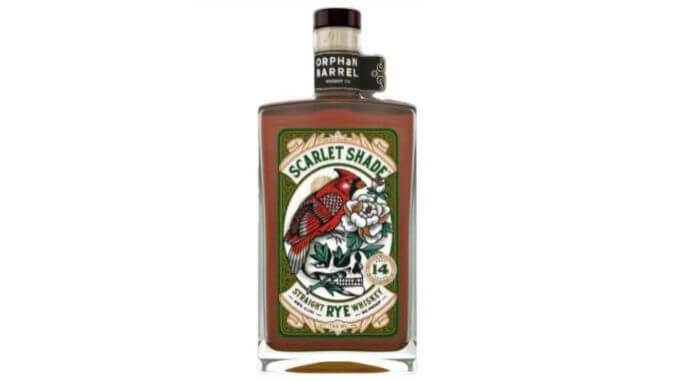
In recent years there have been a few high-profile instances of well-aged rye whiskeys from MGP of Indiana that have been aged outside of Indiana and turned out very well. Dickel’s 13-year-old MGP rye in the Cascade Moon Series comes to mind as a particular favorite, and that spirit was aged in Tennessee. This Orphan Barrel release, on the other hand, was aged in Kentucky for 14 years, and one wonders whether it has some connection to Diageo’s former Bullet 12 Year Rye, albeit at a much higher price point. Regardless, this ended up being much more satisfying than I recall the 12-year-old Bulleit ever being. It’s a classic extra-aged MGP rye, but I get a sense that the hot Kentucky summers unlocked something new and particularly enticing in this spirit. As we wrote when tasting it:
On the nose, Orphan Barrel Scarlet Shade opens with pleasing aromatics of cinnamon brown sugar, sprinkled over buttered rye toast. I’m getting hints of warm banana bread and a lot more red fruit, like cherry compote or pie filling, along with toasted oak and flashes of herbal dill and cigar wrapper. It’s quite a nice nose; easily approachable and enjoyed, with the correspondingly low level of ethanol you would expect. For the age statement, the oak is only a fairly modest player in the overall profile.
On the palate, Scarlet Shade proves to be not quite as sweet or rich as the nose initially implies it might be, but it’s nicely composed all the same. Again I’m getting the buttered toast and cinnamon brown sugar combo, along with brighter cherry, herbal rye, toasted oak and warm baking spices. There’s a good amount of berry fruitiness that is enlivening, and actually some prickly heat as well–not quite expected, given the relatively low proof, but some of the peppery heat has stuck around. It develops more oaky dryness from sip to sip, though it’s by no means excessive. The entire thing strikes a nice balance between elegance and drinkability, though some drinkers will obviously want a more bombastic profile at this price point. They’re all quite complementary flavors, though, and it continues my personal enjoyment of extra-aged MGP rye expressions.
Parker’s Heritage 10 Year Rye Cask Strength
MSRP: $185
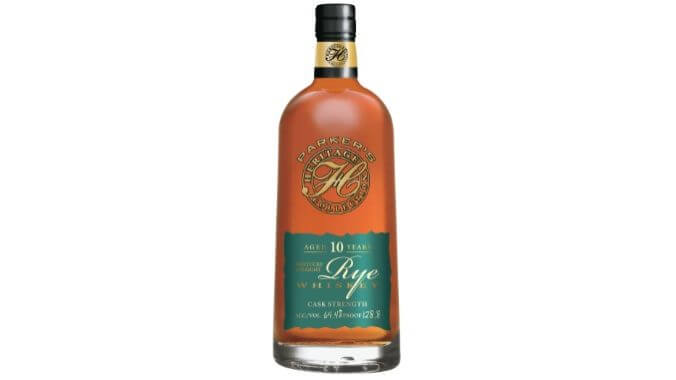
The Parker’s Heritage series more or less function as the high-end experimental wing of Heaven Hill, which has resulted in some genuinely exotic concepts over the years, such as the use of “heavy char” barrels and even whiskey finished in orange curacao casks. The 2023 release, on the other hand, is about as conventional as these picks really get–it’s a cask-strength rye whiskey. At the same time, though, that’s actually something of a rarity for Heaven Hill, given that the company has regular releases of cask strength bourbon, wheated bourbon and wheat whiskey … but no cask-strength rye series. The closest thing is the admittedly sturdy Pikesville Rye, which weighs in at 110 proof and carries a 6-year age statement. But fans of Heaven Hill know that the company’s age statements and proof points are capable of climbing far higher than that. Enter, this 10-year-old cask strength Parker’s Heritage, which weighs in at 64.4% ABV (128.8 proof). The result, unsurprisingly, is a real rye flavor bomb, as we noted when tasting:
On the nose, this rye reveals layers of spice–lots of herbal, slightly grassy and more than a little peppery rye, along with heavily caramelized sugars, traces of orchard fruit, and oak. There are savory herbal tones and faint caraway and mintiness, into plentiful dark chocolate/cocoa powder. Hints of graham cracker and even a little coconut add complexity, while oak is moderate and increasingly trending toward the heavily charred, burnt dimension. Baked apple fruitiness makes for a nice additional dimension, sprinkled with fall spices. On the palate, two of the first things to immediately appear are mint and caramel, along with a reprise of dark chocolate. I’m getting some deeply caramelized sugars and vanilla cream, along with charred oak, herbaceousness and notably minty rye. There’s significant sweetness to the roasty dimension, nicely balanced by grassy and savory herbal rye, with lots of tobacco. The caramelized sugars go very dark, trending toward molasses, with a profile that is quite sweet but also a touch drying on the back end, with French roast coffee astringency. The aftertaste, which remains for ages and ages afterward, puts me in the mind of mint chocolate chip–always a favorite. Certainly, there’s no shortage of boldness here, and the proof awakens a smoldering heat in the chest without ever becoming distractingly bombastic on the palate.
Russell’s Reserve Single Rickhouse Bourbon (Camp Nelson F)
MSRP: $300
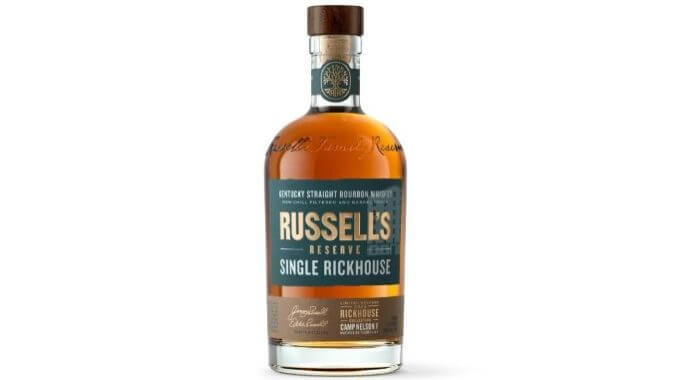
This was a big year for limited releases from Wild Turkey, although bourbon fans are likely to lament the fact that the company has begun imposing genuinely eye-popping MSRPs on those releases. In particular, the Single Rickhouse series releases have carried price points unlike anything we’ve seen from the company’s annual releases before, but they make up for this by being some of the most standout Turkey on the market today. The Camp Nelson F release in particular is described as being more “big, bold, spicy and oaky” in comparison with the previous Camp Nelson C by Eddie Russell, and between the two this 2023 release stands head and shoulders above, in my own estimation. As we wrote when tasting it:
On the nose, this one leads off with a lot of dark fruit–very concentrated and almost vinous or stewed fruit-like, with notes of plum, blackberry and chocolate-covered cherry. It also pushes into dried fruit territory, in the direction of raisin or prune. There’s no shortage of vanilla, and to me the caramelized sugars go dark, trending toward molasses. Old oak is present, with some earthiness or white pepper. The ethanol initially stings somewhat on the nose, despite letting this rest for 10 minutes or so before nosing, but this decreases with more time. In particular, I find the nose on this one transforms and becomes sweeter after tasting it for the first time, as when I return to it I’m suddenly getting caramel chews and honey where they really weren’t before.
On the palate, this is a nice blend of sweet, fruity and oaky impressions. I’m getting stewed black fruit–currant, blackberry, cherry–and cola spice, with tons of old oak that is rich, charred and sweet in character. More earthy white pepper is present, with a sweet roastiness reminiscent of oily French roast coffee beans. Dark vanilla leads into lighter vanilla frosting, with sturdy initial alcohol heat on the palate, though you acclimate fairly quickly. This is indeed bold, but it’s also a grower, getting better and more complex the longer it sits. In particular, more layers of sweetness are opening up, with honey and savory herbal notes coming into play.
Suntory Ao World Whisky
MSRP: $55
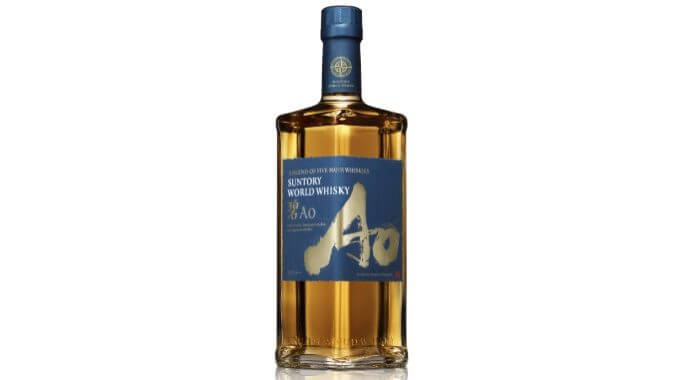
For me, one of 2023’s most pleasant surprises was this wide-ranging blend of whiskeys from Suntory, combining distillate from five different countries–the U.S., Canada, Ireland, Scotland and Japan. Given the Beam Suntory ownership, it’s not hard to make an educated guess at some of the distilleries this would involve, and overall it means a blend that most likely includes American bourbon, Canadian rye, Irish grain/malt whiskey, Scottish malt whiskey and Japanese malts. Frankly, that’s a recipe I would expect might make for a muddled and confusing whole, but the Ao blend leans largely into its malt whiskey side and manages a nice cohesion that an outsider can easily grasp. And at a mere $55, it provides significantly more value than many other entries on this list, to be honest. As we wrote when tasting:
On the nose, Ao is immediately quite sweet and inviting. You’d absolutely be thinking malt whisky from smelling this, as the profile is sweet and heavily honeyed, with biscuit and toasted grain tones, along with white chocolate and almond bark. Citrus and dried fruit notes such as sultana are also present, along with vanilla. On the nose, it’s actually somewhat reminiscent of common sherried malt whiskies, which may indicate that some finishing barrels were involved here somewhere, or just illustrate my own lack of familiarity with some of the malts (such as the Japanese malts) involved. Regardless, it’s a notably sweet nose, and very enjoyable.
This is likewise sweet and rich on the palate, punching above its modest ABV in terms of assertiveness of flavors. Heavy vanilla here meets dark fruit syrup and dried fruitiness, along with marzipan and malt sweetness. It’s not one-dimensionally sweet, however, as the back end of the palate turns in a more earthy direction, with light peat and faint, sweet smoke, presumably contributed by the Ardmore single malt in the blend. That smokiness starts out barely perceptible and grows more firm and easy to locate over time. All in all, this is quite tasty to drink neat, though overall I expect it could be a bit sweet for some. Ethanol, fittingly, is quite gentle. The finish turns a little bit more woody, with just a touch of spice.
2XO The Innkeeper’s Blend Bourbon
MSRP: $100
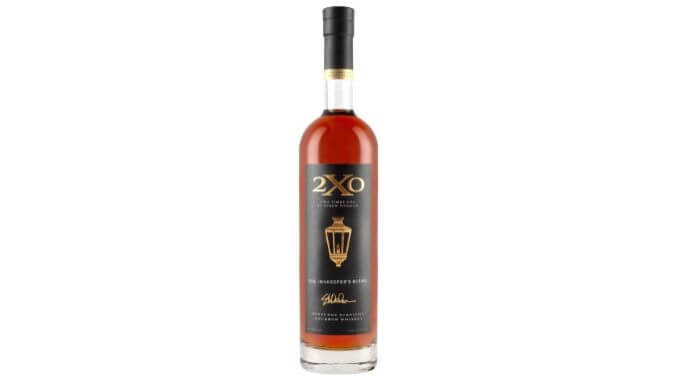
Where the initial release (The Phoenix Blend) from Dixon Dedman’s 2XO–which stands for “two times oak”–didn’t quite capture my imagination, this year’s The Innkeeper Blend was much closer to what I envisioned when reading about the project in the first place. Like the first release, The Innkeeper’s Blend is a blend of mash bills from two different unnamed distilling partners–“one a high rye 35% bourbon mash bill and one a lower rye 16-18% bourbon mash bill.” Dedman then re-barrels those whiskeys into newly charred American oak at both #3 and #4 char levels, and builds the subsequent blend to a sturdy 52% ABV (104 proof). The final product is non-age-stated, which we must note is still a bit of a hard sell on any bourbon with a $100 price tag. But after tasting The Innkeeper’s Blend, I’m more confident in 2XO releases having the potential to live up to their MSRP. As we wrote when tasting:
On the nose, The Innkeeper’s Blend is actually a bit more delicate than I was expecting, at least at first glance. This is one that opens up more as you acclimate to it, throwing off pleasant impressions of butterscotch, vanilla, roasted peanuts and almonds–together, these things made me think of “butter brickle.” Over time, a cherry note becomes easier to parse, along with cinnamon stick, giving this a nice combination of caramelized sugars, fruit and spice. On the palate, The Innkeeper’s Blend comes alive with flourishes of spice and rich caramelized sugars. There’s lots of caramel and vanilla here, suggesting crème brulee with a creamy impression. This foreground quickly transitions into some really nice, wood-driven spiciness, both in the baking spice and tingly/heat department. I’m talking some black pepper and chile, but lots of cinnamon, allspice and nutmeg that feels very wood derived. It nails the richer, deeply caramelized sugars, while also having some of the most alluring baking spice notes I’ve had recently. Heat is where it should be, authoritative but not too prickly.
Wild Turkey Generations Bourbon
MSRP: $450
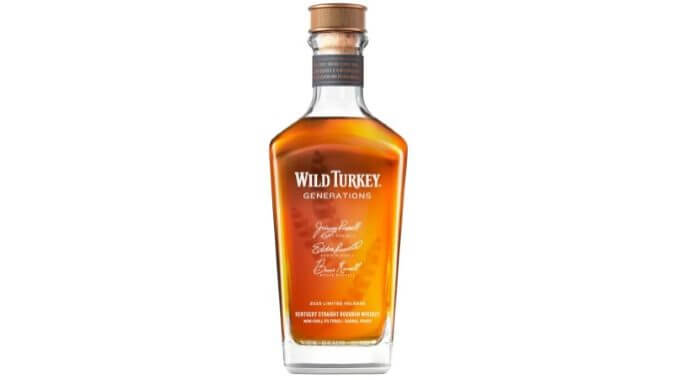
It definitely hurt this fall to see that $300 Single Rickhouse offering from Russell’s Reserve, and then see it followed up by the $450 Wild Turkey Generations unveiled about a month later. Suffice to say, times have clearly changed, although at least the company’s high-value flagship bourbons aren’t going anywhere. This release, meanwhile, captures a huge moment in the brand’s history as the first product blended by not just two but three generations of Russells–Jimmy, Eddie and now Bruce Russell, who currently as the title of Associate Blender in the company. This is a blend of 9-, 12-, 14-, and 15-year-old bourbon presented at cask strength: Notably, the final strength of 60.4% ABV (120.8) is actually the highest ever in a Wild Turkey-branded release, thanks to the company’s lower barrel entry proof. Each bourbon was chosen for inclusion by a different Russell, with an overall product representing three different generations and palates coming together for a singular goal. And that result is pretty damn tasty, as we noted when first sampling it:
On the nose, Wild Turkey Generations initially strikes me as being defined by three elements: Fruity, Savory, Roasty. The fruitiness is bright and alluring, more bright in fact than you would likely expect for an older blend, with black cherry and tart blackberry, bramble fruit and currant. This is followed by sweet, charred oak and espresso, along with nutty cacao nibs and vanilla. The savory elements come forward in tobacco and rye spice, before a brown sugar sweetness creeps in to make things seem more rich. It’s a wonderful combination of elements. On the palate, we’re first presented with an immediate, big burst of sweetness and spice. I’m getting loads of dark brown sugar and notable cola spice, along with nutmeg, vanilla bean, and molasses. High-cacao dark chocolate provides a slightly bitter edge that doesn’t go too far, as does the slightly drying astringency of burnt wood sugars and creme brulee. The fruitiness again shows up in the form of black cherry and blackberry jam, while the spice transitions into hints of allspice. Heat is integrated nicely, giving Generations a sturdy backbone of heft behind it. Across the board, things are dialed in quite nicely, especially highlighting fruit, spice and sweetness.
Wild Turkey Master’s Keep Voyage Bourbon
MSRP: $275
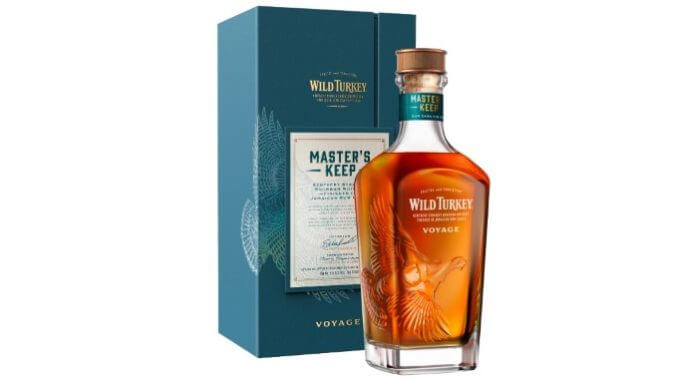
The entanglements of corporate ownership tend to decide which distilleries are able to partner with each other in terms of secondary finishes, so with both Wild Turkey and Jamaica’s iconic Appleton Estate being part of the Campari family, one would have expected such a pairing to eventually be inevitable. This finally arrived in the form of 2023’s Master’s Keep entry, Voyage, which features 10-year-old Wild Turkey bourbon selected by Master Distiller Eddie Russell and select rum casks selected by Dr. Joy Spence, the industry-renowned Master Blender of Appleton Estate Jamaica Rum. Notably, this bourbon was laid to rest for its secondary maturation in casks that previously held 14-year-old pot still rum, which to rum geeks will tell us that the rum and estery “funk” character are likely to be on the stronger side, given that most of the Appleton Estate products on the shelf are blends of lighter column still rums and the “heavy” pot still portion to beef up the intensity of flavor. The final product was bottled at 53% ABV (106 proof), and our initial tasting revealed a fantastic interplay between a rum-soaked nose and bourbon-forward palate. As we wrote then:
On the nose, Master’s Keep Voyage is redolent in distinctly rummy qualities, overflowing with heavily caramelized sugars–loads of brown sugar, molasses cookie and related spice notes of cinnamon and especially clove, slightly suggestive of allspice. There’s some roasted banana-like fruitiness that gives is a slight tropical impression, and searching further you can dig up hints of sweet corn/graininess, but the caramelized sugars really dominate the nose. Over time, there are also traces of dried fruit emerging as well. All in all, the nose suggests big sweetness.
Imagine my surprise, then, to find that the palate of Master’s Keep Voyage was not really quite what I was expecting from how the nose initially presents. I had thought that perhaps the rum casks would be celebrated above all else, but on the palate it’s Wild Turkey’s bourbon that authoritatively strides to the center stage. Big oak is present here, with heavy char, ashy roast and vanilla cream. Herbal rye is also present, with more herbaceous and peppery flavors than I ever expected from the sweet nose, along with roasted plantain and currant fruit. It’s not that the sweetness isn’t there, presenting with some of the same brown sugar, but there’s an edge to it contributed by oak and roasty astringency, nor does it all scream “rum” right off the bat. That is, until the finish of this dram, where–minutes later, even–a distinctly pot still rum funk, spicy and almost rubbery, creeps to the forefront. That may not necessarily sound appealing, but it’s very typical of the Jamaican rum funk known as hogo, which adds a wonderful aspect of complexity to the back end here. All in all, as with so many Wild Turkey products, this one feels like it grows more complex with each subsequent sips–one of my favorite things about the distillery in general.
![]()
The Best Additional Spirits (Rum, Agave, Gin and More) of 2023
As always, this isn’t just a whiskey game. You can call me a whiskey writer, and that will always be more or less correct, but I’ll always dedicate time to covering the rest of the spirits world as well, while making an impassioned plea for other drinkers to take the time to explore the world beyond bourbon in particular. At a time when price gouging and market forces have made whiskey a more unapproachable hobby than ever, this is a particularly good time to develop a greater interest in other spirits, where far better values can typically be found. Give them a try, and you may find a whole new world has opened up to you.
Appleton Estate 17 Year Legend
MSRP: $500
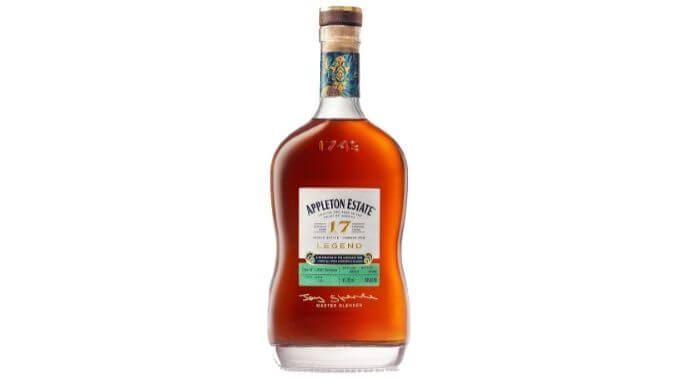
The reveal of Appleton Estate 17 Year Legend was a pretty special moment this summer for rum geeks and tiki cocktail aficionados in particular, representing as it did a rare instance to try a piece of history that is more or less regarded as being lost forever. The reason might not be immediately obvious: After all, Appleton has regularly available 15- and 21-year-old expressions. But the 17 Year Legend is something different: A concrete effort to recreate the long-lost J. Wray & Nephew 17 Year Old Jamaica rum that served as the original backbone for the mai tai cocktail created by Trader Vic Bergeron in 1944. This was possible thanks to shared ownership, and Appleton Master Distiller Joy Spence’s access to historical distilling records in a years-long quest to recreate the closest possible thing to this historic rum. Suffice to say, this is the closest that the consumer will ever get to tasting the mai tai as it was when first created. Although with that said … I honestly ended up preferring this rum neat, where it is particularly delicious. As we wrote when tasting:
On the nose, Appleton Estate 17 Year Old Legend throws off heady waves of fruit and funk, evoking bananas foster, orange peel, dark chocolate, toffee, a little tobacco and mashed plantains. The earthy, herbal funk of Jamaican rum (known as hogo) is more pronounced here than in core Appleton expressions, suggesting a higher ester count and probably a larger percentage of distillate from the company’s pot stills than in most of the blends. This would seemingly be in line with fitting the historical record, in which the Jamaican rums of the day such as the J. Wray & Nephew 17 Year Old were more pot still dominated. On the palate, this is indeed significantly heavier and more funky than the usual Appleton expressions you’re finding on store shelves, such as the 8- or 12-year-old. Ripe tropical fruit and brown sugar lead off with assertive command, followed by charred oak, orange pol and darker dried fruit notes. Complex herbal, earthy flavors of tobacco and dried herbs add layer after layer of additional flavors to suss out. This is not one of the modern high-ester Jamaican bruisers that have become so popular in the mixology world, such as Rum Fire–it’s a more elegant, refined version of that after such a patient aging and blending process. It’s an absolutely delicious dram, consumed neat.
Bombay Sapphire Premier Cru (Murcian Lemon)
MSRP: $35
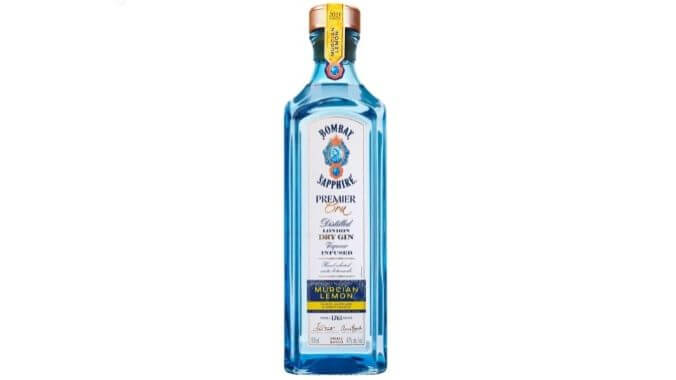
This is quite a reserved approach for a special release gin from Bombay Sapphire, eschewing any particularly exotic ingredients and instead choosing to highlight the essence of Fino lemons from Murcia, in the southeast of Spain. Given that so many U.S. “new western” and microdistillery gins have already explored this route in the last decade by revolving around the citrus notes in their gins, while simultaneously lessening the role of juniper, I was concerned before tasting this gin that it might come off as one-dimensionally sweet and fruity. Thankfully, though, the Premier Cru never really abandons the relative balance of the flagship product. In tasting it, I found that the additional lemon by no means comes to dominate this flavor profile, as we wrote in our assessment:
On the nose, Premier Cru offers a pronounced lemony top note, suggesting a hint of lemon custard and citrus oils, followed by juniper’s resinous soul and some floral flourishes. I’m also getting a little bit of sweet almond paste, which lends some welcome depth. Peppery spice and something a little bit like jasmine round out the aromatics. On the palate, Premier Cru is still captivatingly strong in its juniper-backed flavor profile, with deep, resinous and piney notes meeting with the berry fruitiness of juniper and more savory herbal tones. It certainly doesn’t layer on the citrus (or the sweetness) as one finds in so many American microdistillery gins these days, with the Murcian lemon here poking through at various points, especially in the finish, where candied lemon peel (and slightly bitter pith) shine. I’m also getting perfumey florals, resin and hop-like bitterness, with pink peppercorn. Overall, the flavor profile is quite punchy, and the higher proof point absolutely makes itself felt on first inspection, before fading in intensity as you return for repeat sips. The company describes this bottle as being designed for French 75s and the martini in particular, where I’m sure it would easily stand up to whatever you throw at it.
Camikara Rum 12 Year Old
MSRP: $90
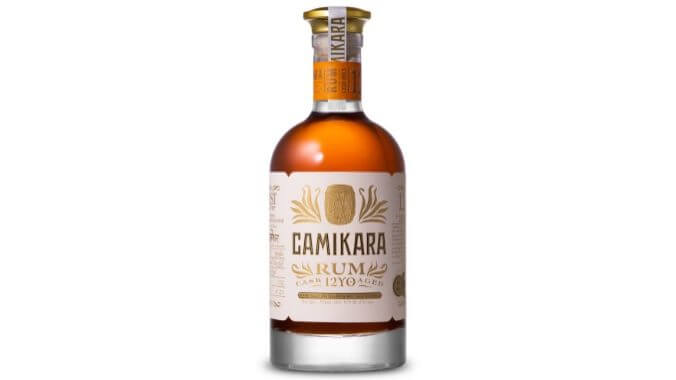
I hardly would have predicted that one of my favorite rums of 2023 would hail from India, a nation whose sugar cane spirits I’ve never sampled before, but it’s just one more reminder that rum is by far the world’s most versatile and universal spirit. After all, in recent years this has led to me sampling rums from all over the globe as a spirits writer, be it the island of Réunion, the rain forest of Belize, or nation of South Africa. Why shouldn’t India, the world’s most populous country, produce great rum as well? This one came about more or less as an accident–created by Piccadilly Distilleries, best known as the country’s largest producer of malt whiskies, the casks making up Camikara Rum 12 Year Old were a forgotten experiment in sugar cane juice (rather than molasses) distillation that were inadvertently set aside in a warehouse for far longer than intended. Once rediscovered, however, a gem of a funky pot still rum had been created, as we discovered for ourselves when tasting:
On the nose, Camikara 12 Year displays vivacious character that flits between fruit, spice and barrel impressions, with lots of banana bread, slathered in caramel, segueing into clove, ginger and licorice. There is a lot going on here–it is distinctly fruity, spicy and tropical in its shape, with pot still-derived esters and more than a little bit of alcohol heat making the elevated proof more obvious. Surprisingly, though, it doesn’t have a whole lot of fresher cane juice character that is easily identified, lacking the grassy or earthy impressions that are usually found in even well-aged agricole rums. I suspect that it’s because this one has interacted so much with the barrels during that long, hot maturation that it’s instead fully embraced barrel-derived characteristics. And that’s not necessarily a bad thing, just an unexpected thing for cane juice rums. All said, I still do like this nose quite a bit–it’s perfumey and spicy and intriguing, with loads of baking spice but not a ton of overt woodiness.
On the palate, this rum opens up with huge spice notes, wave after wave of oaky spice–although sort of oddly it’s again not a very intense woodiness and pure oak flavor, but more like an infusion of baking spices. I’m getting lots of cinnamon, ginger, allspice and anise, flanked by sweet caramel and flambéed banana. A little heavily charred mocha is another nice touch, rounding things out. The banana is quite pronounced and ripe, supported by peppery heat. This is quite flavorful overall, but again it seems like many of these flavors are derived from the barrel rather than the local terroir of that cane juice. Again, not a bad thing, but it makes this rum arguably drink more like a well-aged molasses rum than most aged agricoles.
Cardenxe Sotol De Desierto
MSRP: $60
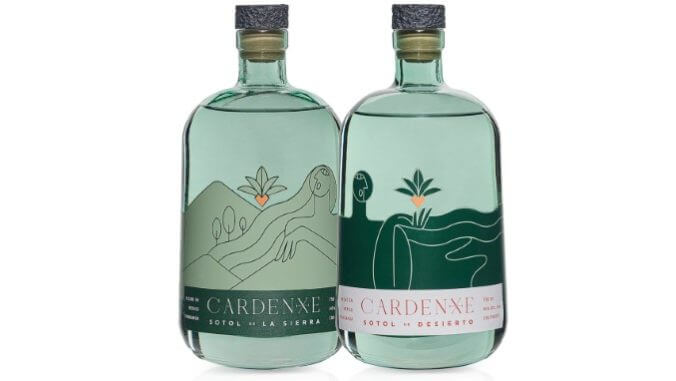
The traditional Mexican spirit known as sotol remains on the vanguard of the spirits world, with sales and awareness rapidly increasing as it rides the coattails of the seemingly ever-expanding tequila and mezcal markets. Produced in a manner similar to most mezcals, with fermentable sugars unlocked via roasting plants in underground pits, sotol varies in the plant itself being utilized: Instead of agave it’s the so-called “desert spoon,” various species of dasylirion. Cardenxe Sotol produces two varieties of the spirit, with one (Sotol De La Sierra) produced solely from dasylirion wheeleri, while the Sotol De Desierto is more of a cuvee from three species of desert spoon, which they call a “desert blend.” The latter is actually the more affordable of the two, despite also being stronger, so perhaps it’s no surprise that the desert blend really spoke to me most. If you haven’t experienced sotol yet but are a lover of agave spirits, put this on your checklist for 2024.
On the nose, this one immediately strikes me as more distinctive in character–I’m getting subtle hints of smoke, along with herbal sweetness that has a deeper and more roasted characteristic, even incorporating traces of floral vanilla or cacao nibs. Possibly a bit of grapefruit as well? On the palate, this one strikes me as fruitier as well, with something like bright traces of citrus and pineapple, combined with moderately assertive smokiness. It seems either a little bit sweeter overall than the dasylirion wheeleri sotol, or perhaps it just has a bit less balancing astringency, making it appear relatively sweeter. Regardless, this is a pleasing combination of floral and vegetal sweet notes, evoking perhaps a less bitter alpine amaro … except I’m also getting some subtle baking spice the more I return to this, making the Sotol De Desierto entirely its own unique animal. All in all, I feel like the Sotol De Desierto just presents with a bit more engaging character overall than the Sotol De La Sierra, which only makes sense given the modest bump in proof. With the price being significantly friendlier, it’s definitely the one I would find myself seeking out.
Chinaco Tequila Anejo
MSRP: $65
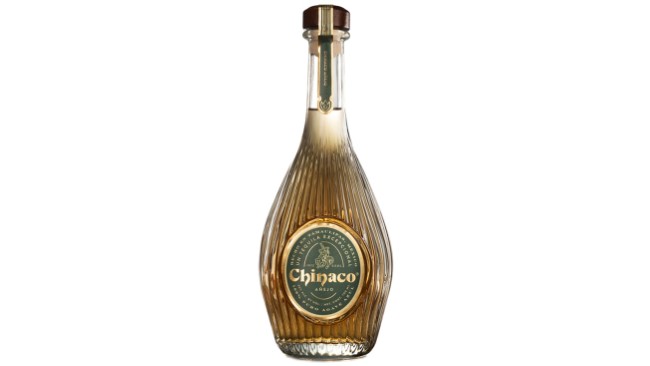
Chinaco is a decidedly unique product for a handful of reasons, starting with where it is made. It’s the only tequila made in the state of Tamaulipas, thanks to an effort from founder Don Guillermo González Díaz and the local community, which resulted in select parts of Tamaulipas being included as part of the general declaration of Denominación de Origen Tequila. The vast majority of tequila is made in Jalisco, but the differing climate, soil and blue agave that grow in Tamaulipas inherently lead to a different product. Chinaco also favors some different aging methods from what is most common in the industry, using scotch whisky casks in addition to American bourbon barrels in its aged tequilas. On the distillation side, things are a bit more common, with copper pot stills and traditional roller mills used in addition to the more modern roasting of agave via pressure under autoclave. Tequila purists will of course hold by roasting via brick ovens, but at least there’s no diffuser involved here. The anejo, meanwhile, is aged in a variety of American and European oak for an unusually long time–a heady 30 months of aging, which is on the extreme end for anejo tequila at 2.5 years. This is almost in the range that is typically described as “extra anejo,” making for quite a distinct, individualistic product, as we wrote when first tasting it:
The nose on this anejo is vastly different from either of the other expressions, with much more wood presence–an aromatic suggestion of dry woodshed, along with more spice–toasted clove and hints of cinnamon. There’s a resinous quality on the nose, with dried herbs and a touch of dark chocolate. On the palate, things quickly get interesting, with a heavy oak profile that brings a lot of barrel spice into play. There’s a lot of baking spice here, with sweet cinnamon and cardamom, and a touch of mocha mingling with dried herbs and fainter vegetal notes. Definitely on the sweeter side here on the palate, I still find myself enjoying the spice and char notes, even if they arguably cover up most of the company’s terroir. Some would definitely say the oak is overdone here, but I am liking the profile it brings. It’s a bit of a trope at this point that anejo tequilas like this are often marketed in the U.S. as being “good for bourbon drinkers” in an attempt to court American whiskey geeks, but I dare say that what this one reminds me of in many respects is actually aged rum, and I’d be curious to see some overlap between those consumers. The spice and earthier characteristics make it a novel aged tequila at the very least–if you’re typically a fan of anejo, it’s an expression I would check out.
Fosforo Tobala Mezcal
MSRP: $99
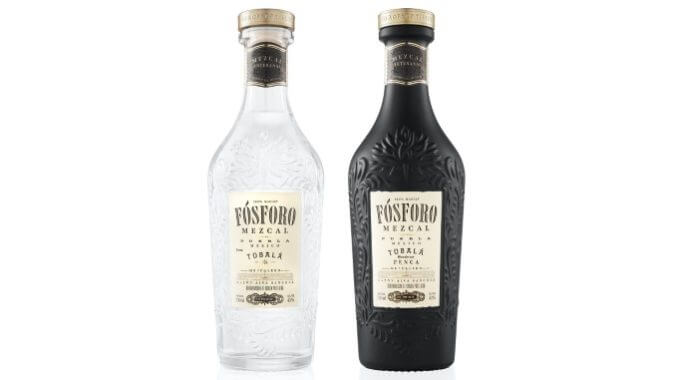
When consumers learn about the differences between tequila and mezcal, they’re typically focusing on the difference in flavor profile brought about by mezcal being roasted in underground pits rather than being steamed in ovens. This is obviously a key difference, but overlooked by many typical consumers is the difference brought by the agave itself that is involved: Where tequila must be produced solely with blue Weber agave, mezcal can incorporate dozens and dozens of other species, all with their own pronounced flavor profiles. Fosforo Mezcal zeroes in on this fact via their exclusive use of the Tobala varietal of agave, which is known to be temperamental and labor intensive even by agave standards, taking 8-15 years to mature. This conceptually sets the company apart from the vast majority using the more accessible Espadin agave, making for one of the most distinct agave spirits I tasted in 2023. As we wrote when first tasting this one:
On the nose, what immediately stands out here is a clear impression of roastiness–not overt wood smoke specifically, but an intensely roasted/earthy/cooked character, redolent in roasted agave and a lot of nuttiness, with more than a little cocoa as well. The nose is a little on the sweet side, with hints of butterscotch, nutmeg, peppercorn and hot cocoa. On the palate, however, things turn in a bit more of an angular direction, boldly herbal and more overtly smoky. I’m getting bold mint and grassiness along with the roasted nuts, a combination of salty and herbal savory character. It’s likewise not quite as sweet on the palate as the nose at first suggested it might be, though the trailing aftertaste does put me in mind of toasted marshmallow. It’s important to note that all these flavors are pretty assertive and punchy in a general sense, the slightly elevated 45% ABV (90 proof) seemingly having amped up the volume of delivery. This certainly does not feel like it would get lost in a cocktail, in other words.
Holmes Cay Barbados 2009 Premier Cru Rum
MSRP: $170
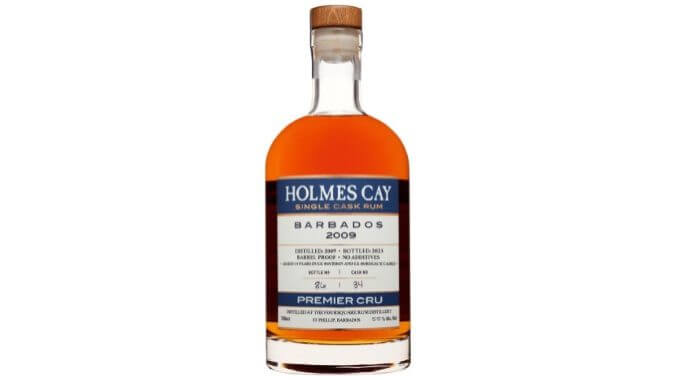
We see a lot of fortified wine finishing casks in the whiskey and rum worlds–sherry, port, madeira, etc.–but finishing a spirit in a cask that previously held traditional wine always seems like more of an X-factor to me. Where it is typically easy enough to predict what kind of character one might get from say, an oloroso or PX sherry cask, the flavors derived from traditional wine casks seem to be more subtle and difficult to predict. That’s why I was particularly curious about this single cask release from Holmes Cay, which took well-aged (12 years, 8 tropical) Barbados rum from Foursquare and then gave it an additional two years maturing in Premier Cru (First Growth) Bordeaux wine casks from France. That’s a long finishing period in a particularly difficult style of barrel to lay one’s hands on, bottled at a cask strength of 55% ABV (110 proof), and the results are complex and bewitching, as we wrote when sampling it:
On the nose, the Holmes Cay Barbados 2009 Premier Cru displays a complex spice and wood profile, with underlying savory and earthy tones. There’s a butterscotch here that is a little unusual at first, opening into earth/soil and red fruit. I’m getting a suggestion of currant, along with big and vivacious spice notes, with heavy cinnamon and allspice. The French oak has really layered the nose with spice. On the palate, that spice is there once again–a whole plethora of baking spices, particularly allspice, but also a fruity pepperiness and some toasted oak. At the same time, there’s dark stone fruit (plum) and even darker jammy tones, along with nutty cocoa and chocolate/pecan bar. This may sound like a rather desserty dram, but in reality it actually runs toward dry as each sip progresses, with oak reasserting itself and moderate drying tannin taking on a bigger dimension. Ephemeral earthy tones make it memorable but somewhat difficult to pin down. It feels like there’s even more to be unearthed here.
Mount Gay The PX Sherry Cask Expression
MSRP: $270
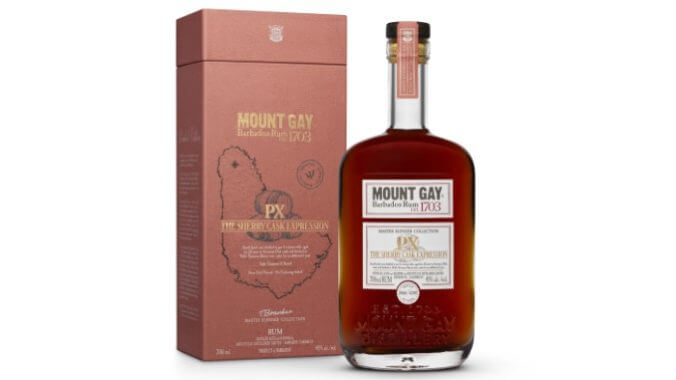
An especially decadent entry in Mount Gay’s annual Master Blender collection is The PX Sherry Cask Expression, an almost unbelievably extra-mature Bajan rum that received an incredible 20 years of tropical aging before the remnants that hadn’t yet been lost to evaporation were finished with an additional year of maturation in Pedro Ximenez sherry casks. The obvious danger, of course, is the threat that the rum has been entirely taken over by the oak/wood profile of the barrels, but perhaps that’s where the sweet, concentrated fruitiness of Spanish PX sherry comes to play? The result is one of the year’s best dessert drams, as we wrote when tasting:
On the nose, the PX Sherry Cask Expression is initially redolent in sweet char and rich tones of old oak, fudgy chocolate, vanilla bean, espresso roast and roasted tropical fruits. In the first few passes, it’s not really the sherry character that is jumping out at me, but rather the decadent notes of the base spirit, very woody and charred and rich. There are some lightly funky pot still esters, and a hint of ginger, but over time the sherry makes itself felt more and more clearly with more pronounced vinous notes and waves of dried fruit. This one smells like a journey, folks. On the palate, it’s everything I was really hoping for–the oak has yielded a very smooth, silky texture and a mouthfeel considerably bigger than the 90 proof would suggest. Vinous fruit notes of currant and blackberry lead off, surprisingly bright and vivacious, paired with espresso roast, gingerbread and tons of old oak, with moderate sweetness. Blessedly, the oak is somehow composed and elegant rather than dominant, with moderately intense tannins that offer a drying balance to the sweet fruitiness. Lingering dried fruit sticks on the palate for minutes afterward, with raisin, prune and vanilla cream. It really is a treat.
Mount Gay Single Estate Series Rum (23_01)
MSRP: $400
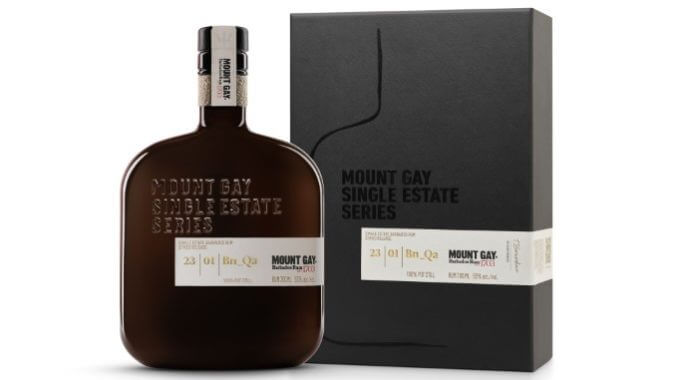
This notably luxe release from Mount Gay with an eye-popping MSRP reflects eight years of constant labor to reach this point, being the culmination of the company’s move to bring sugar cane production directly under their own supervision and create a vertically integrated operation for the first time in centuries. Acquiring nearby sugar cane fields of the old Mount Gay Estate back in 2015, they’ve spent 8 patient years growing, harvesting, fermenting, distilling and aging before this first release of the Single Estate Series, 23_01. Made from a blend of rums from the 2016 and 2017 sugar cane harvests, this is a 100% copper pot still rum, aged exclusively in ex-bourbon casks, with Master Blender Trudiann Branker favoring simplicity in distillation and aging in order to allow the distillate–a reflection of the company’s own terroir, now–to shine most clearly. The final product is bottled at 55% ABV (110 proof), Branker’s preferred strength for the company’s pot still rums, and features a combination of “fresh” notes and salinity not typically found in Mount Gay’s spirit, as we wrote when first tasting:
On the nose, 23_01 features character that starts out as somewhat familiar to lovers of Mount Gay’s pot still-forward rums, but then steadily moves in a more unique and unusual direction. On first pass, I’m getting slightly funky, overripe fruit, orange citrus, charred oak, milk chocolate and mixed baking spice, evoking Christmas cookies. As it unfolds, this morphs in a more botanical sort of direction–suddenly I’m getting more grassiness that evokes the fresh sugar cane, along with toasted sugar, pear fruit and floral notes. It’s like the nose starts out familiar, and then becomes increasingly verdant, reflecting the terroir of the distillery. On the palate, this is fairly dry and delightfully funky. I’m getting pineapple and charred oak, along with mocha, mixed spice, grassiness and hints of rubber. The residual sweetness is only mild, while the flavors accent the fresh cane in a way that doesn’t often come through in molasses rums–it drinks almost more like an aged agricole rhum made from fresh sugar cane juice. Over time, like the nose, the palate also becomes increasingly floral and earthy, with a more “fresh” character than you typically find in aged molasses rums. The finish is fascinating, with a distinctly salty/saline note that is reminiscent of licking one’s lips after swimming in the ocean.
Procera Gin – Red Dot Vintage
MSRP: $100

Procera Gin was one of this year’s most pleasant surprises for me, an African gin that not only features beautiful botanicals from around the continent–acacia honey, coriander, mace, cardamom, pink peppercorn, orris root and pixie oranges, etc–but redefines itself through its focus on specifically African juniper, Juniperus procera. What really makes Procera Gin special in the eyes of the brand, though, is the proximity of the spirit’s production to the juniper it is using–so close, in fact, that the juniper berries are picked fresh for distillation and never dried. This focus on the freshest possible juniper is the key element of Procera’s concept and marketing. The “Red Dot” Procera, meanwhile, is a beefed up take on the flagship Blue Dot that comes in at a commanding 51% ABV (102 proof), being specifically formulated for cocktails while also featuring more unique African botanicals such as Kenyan elephant pepper and oyster shells, along with Nigerian alligator and selim pepper. The result is an extremely bold and flavorful gin that would shine through in absolutely any cocktail, as we noted when sampling:
On the nose, this one is woody, spicy and rich, with an almost sandalwood like suggestion along with all the pine resin. The palate is just overflowing with rich, subtly sweet and resinous juniper, while more of the berry fruitiness of the plant creeps forward here as well. This stuff is just bombastically, intensely flavorful, with complex notes of bright lemon, savory sage and something like sushi nori giving it a flavor that creeps back and forth between woodsy and coastal. Absolutely bursting with character, I would honestly call this one of the most purely flavorful gins I’ve ever come across. There’s no way that this Red Dot expression could get lost in a cocktail, that’s for sure. Use in applications where you really want the gin to shine through as boldly as possible.
Tequila Ocho Plata Puntas
MSRP: $75
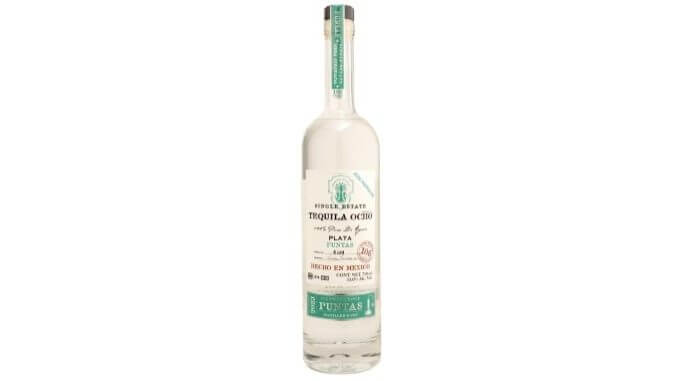
Tequila Ocho is a company we’ve recently become more familiar with, visiting the first-of-its-kind agave estate distillery in person last spring. This brand has been built around the aesthetic of being a good steward to the agave plant and its legacy in Mexican distillation, and then translating the terroir of that agave to the bottle. Nowhere is that more direct than in Plata Puntas, the company’s overproof silver tequila release, currently in its second year. This one pushes even further, to 53% ABV (106 proof). It is made with agave from the company’s own fields, this time at Rancho Mesa Colorada, overseen by Tequila Ocho co-founder Carlos Camerena, and distilled at Tequilera Los Alambiques in eastern Jalisco. It should likely go without saying to enthusiasts that this is a very traditionally produced tequila, with agave pinas cooked in brick ovens before fermentation and distillation in copper pot stills. Tequila Ocho likely sees this as the pinnacle of their unaged tequila-making method, and after tasting it we wouldn’t jump to disagree. It retails for a quite reasonable $75, while its name refers to the puntas, or so-called “distiller’s cut” from the very end of the heads to the very beginning of the hearts in distillation. As we wrote when tasting:
On the nose, Tequila Ocho Plata Puntas displays vivacious agave notes and candied fruitiness. Roasted agave is big up front, joined by floral vanilla and salted, bruleed grapefruit. I’m also getting a hint of clove-like spice, some burnt sugar and floral notes. It likewise has a nutty dimension that strikes me as almond in particular, verging on marzipan, though the sweet agave is really the star of the show. On the palate, this displays powerful agave flavors, favoring the sweet, roasty and spicy sides of the equation. There’s a big peppery character, but also vanilla pudding, citrus, baked fruit, some resinous notes and a little underlaying herbal bitterness that keeps the overall flavor from registering as more than mild residual sweetness. The profile is bold and bright, with complexity that agave geeks will want to dissect in far more detail than someone like me–a relative neophyte compared to true tequila obsessives–is capable of bringing to bear. In short, it’s an absolutely fantastic, delicious blanco, and one where even its advanced proof point never becomes a burden. In fact, it carries its heat extremely well even without any wood aging, and its profile drinks exceptionally well neat.
![]()
Bonus Awards
And finally, here are a few extra pieces of recognition I’d like to hand out to various brands I tasted this year, as we have also done in previous iterations of this list. In particular, this is a space to recognize some of the best values in the market this year, something that has become increasingly difficult to quantify in recent years.
Best Value in Bourbon — Barrell Foundation Bourbon
MSRP: $55
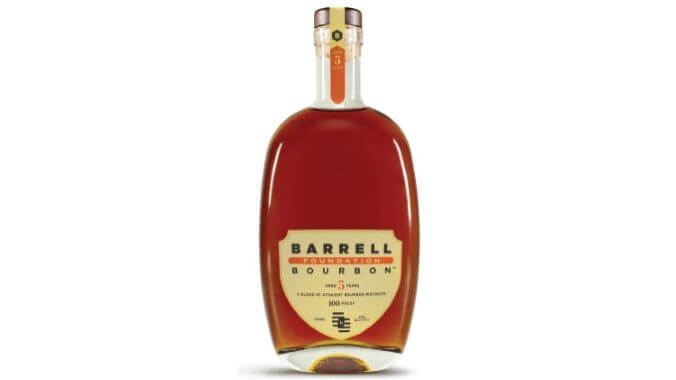
Barrell Craft Spirits built its name on sourced blends of cask-strength bourbon and rye, but in the last few years the company has gradually and deftly reached out to explore a higher-value section of the bourbon landscape–and with the release of this year’s Barrell Foundation Bourbon, I think they really have zeroed in on the ideal niche. This is a blend of straight bourbons carrying a five year age statement on the front label, but that’s a pretty big understatement, only reflecting the youngest spirit in a blend that actually contains 7 different bourbons from four states. They are:
Kentucky: 8 years old
Indiana: 5, 6, & 9 years old
Tennessee: 8 years old
Maryland: 5 & 6 years old
That makes for a “derived mashbill” of 73% corn, 23% rye and 4% malted barley, by which Barrell simply means the average of all the mash bills involved in this blend. So what we have here is a moderately aged bourbon blend presented at 50% ABV (100 proof), which ultimately captures the best aspects of all its sources, as we noted when tasting:
On the nose, this first presents with sweet impressions of peanut brittle and caramel, though what is really jumping out at me is something distinctly floral. It evokes fresh lavender, which pairs nicely with apricot fruit, bergamot citrus and toasted oak. The floral-into-fruity character here is really distinctive and interesting to me, and has me going back again and again trying to figure it out. There’s almost something “botanical” about it, and I’m really enjoying it. On the palate, this bourbon blend first shows sweet caramel and plenty of vanilla bean, before a reprise of those sweet florals and fresh, grassy, summery notes. I’m getting lemon citrus and rye grain, along with flashes of cinnamon and cardamom spice cake, and toasted oak. This is a very bright and “zingy” bourbon, with accessible flavors and character to spare. The floral notes in particular really give it an interesting little niche to build itself around. Minutes later, I find myself still getting hints of orange zest on the palate. Positively refreshing. All in all, I really like this, especially at this price point. This is a blend that highlights some of the best attributes of each source, with a moderate overall age statement and reflection of maturity, and at an MSRP that doesn’t break the bank.
Best Value in Rye Whiskey — Rebel 100 Straight Rye
MSRP: $20

This new bottle and its frankly shocking $20 MSRP have appeared in a time when rampant inflation and price gouging have made such a thing almost unheard of. Rebel 100 Rye Whiskey is essentially the upgraded version of the existing rye from Luxco’s Rebel, the brand once known as Rebel Yell. It’s a product of Lux Row Distillers in Bardstown, Kentucky, and its straight designation (without additional details) tells us that the contents of the bottle are at least 4 years old. Combine that with the 50% ABV (100 proof), and on paper it’s just a fantastic value any way you slice it. People are simply not launching brands like this with $20 MSRPs anymore, folks. You’ll be finding many brands with similar specs launching for $50, or $75, or even beyond. On paper, Rebel 100 feels like a flashback to a decade ago, before the massive across-the-board rise in whiskey prices. Honestly, the last time anything like this even launched on a wide scale was probably the arrival of Old Forester Straight Rye Whiskey back in 2019. That brand went on to become a mainstay at cocktail bars, so perhaps Rebel 100 Straight Rye Whiskey will as well. It comes from a classic Kentucky rye mash bill of 51% rye, 45% corn and 4% malted barley, and is understandably on the sweeter side of the rye market as a result, as we noted when tasting it:
On the nose, Rebel 100 is hitting up front with heavy honey, suggesting considerable sweetness. I’m getting lots of citrus and stone fruit (apricot), along with freshly cut lumber. The rye has a more grain-forward, rye bread character, and there’s something distinctly buttery here as well. The overall impression is buttered rye toast, with cinnamon sugar and a side of fruit. On the palate, this is sweet-spicy and pretty big in stature. I’m getting heavy honey here again, which gives a distinctly candied impression to orange peel and peach ring fruitiness. There’s also tons of pepper, quite spicy and tingly, with black pepper and hints of red chile flakes. The overall sweetness puts one in mind of cream soda, and there’s really no missing that this is on the sweeter side of the rye spectrum. That may turn off some drinkers, but regardless it’s still a hard to believe value for the money when taken in the context of the 2023 whiskey market.
Best Classic Malt I Discovered — Tamdhu
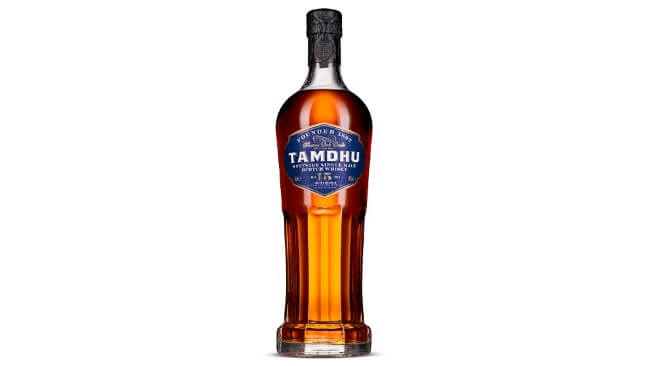
Each year, I try to offer a tip of the cap in this list to an old-school Scottish malt whisky I discovered or rediscovered in the calendar year, and this time the one that immediately stands out to me is my tasting of the 12- and 15-year-old expressions of Tamdhu. The Speyside distiller has been producing malt whiskey pretty steadily since 1897, but its malts have relatively rarely been accessible to consumers, as the majority of its product has ended up in major scotch whisky blends via brands such as The Famous Grouse or Cutty Sark. Under the current ownership of Ian Macleod Distillers, however, Tamdhu has become more accessible with a steady lineup of core single malt expressions highlighting their style of sherry cask maturation. I walked away particularly impressed with the Tamdhu 15 Year Old, matured exclusively in oloroso sherry casks, as we wrote when initially tasting it:
On the nose, it quickly becomes apparent that this is a significantly more complex approach than the more bluntly sherried 12 Year. The prominent dried fruit sherry aromatics are still here, but they’re less universal, and joined instead by more toasted malt syrup and biscuit, roasted nuts, along with cedar and delicate baking spice. Everything about this expression reads as warmer, with toasted oak and elegant oak spice on the palate, combining with bright orange/lemon zest, dried fruit sweetness and cardamom-like spice. I’m also getting a bit more roasty char, with a kiss of espresso. All in all, this is a very nice expression of Tamdhu’s single malt whisky. It’s a few levels more fully realized and cohesive than the bold but more straightforward 12 Year Old, and the tiny bump in the proof point does seem to make it pop that much more vivaciously on the palate.
Jim Vorel is a Paste staff writer and resident beer and liquor geek. You can follow him on Twitter for more drink writing.







































